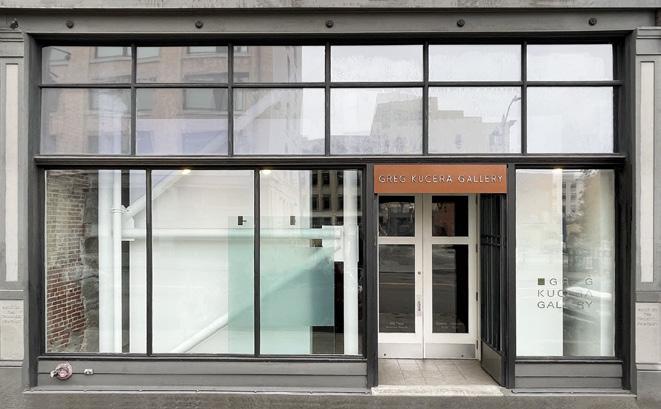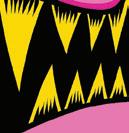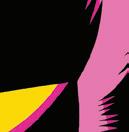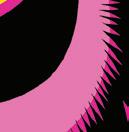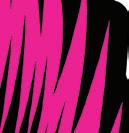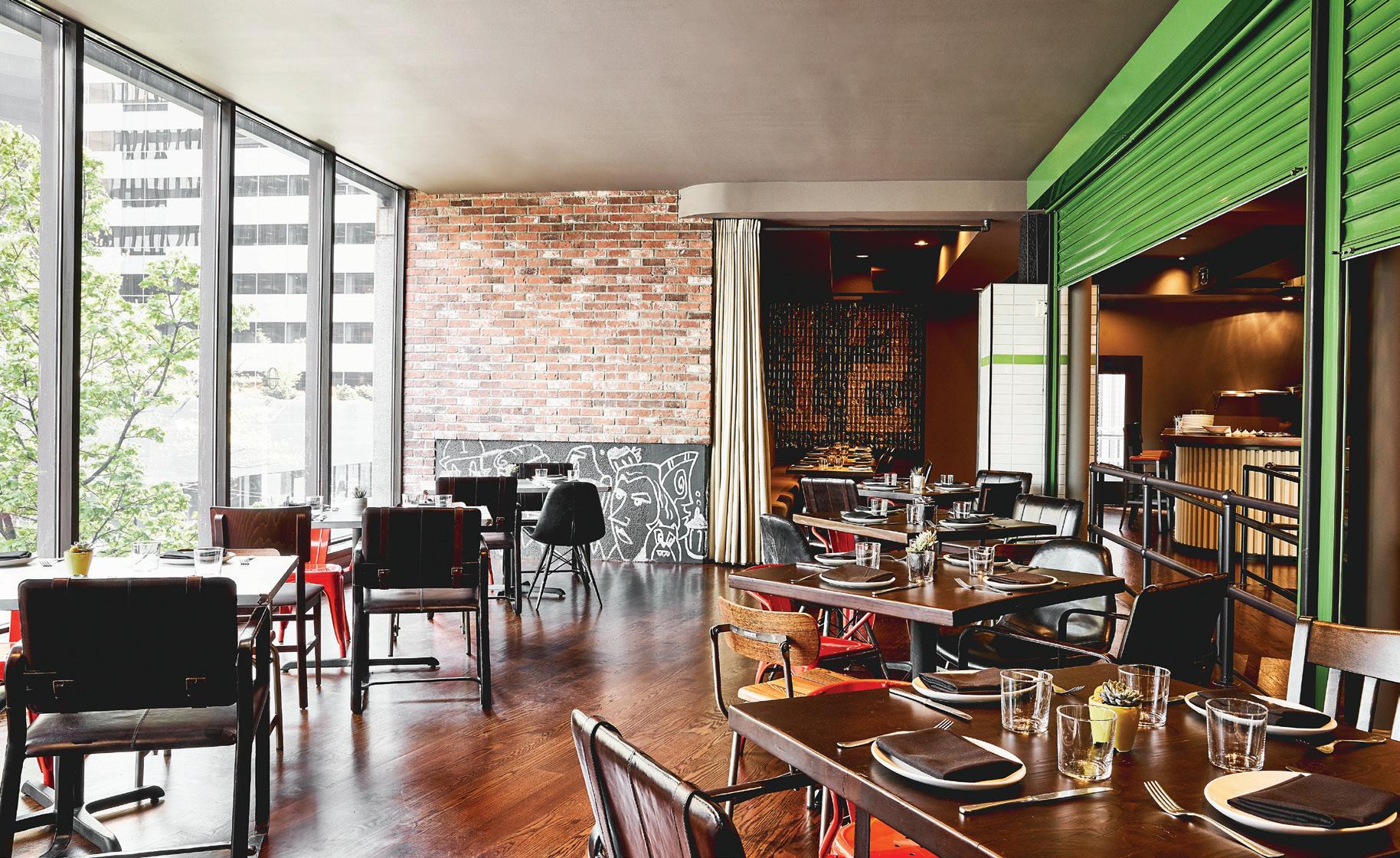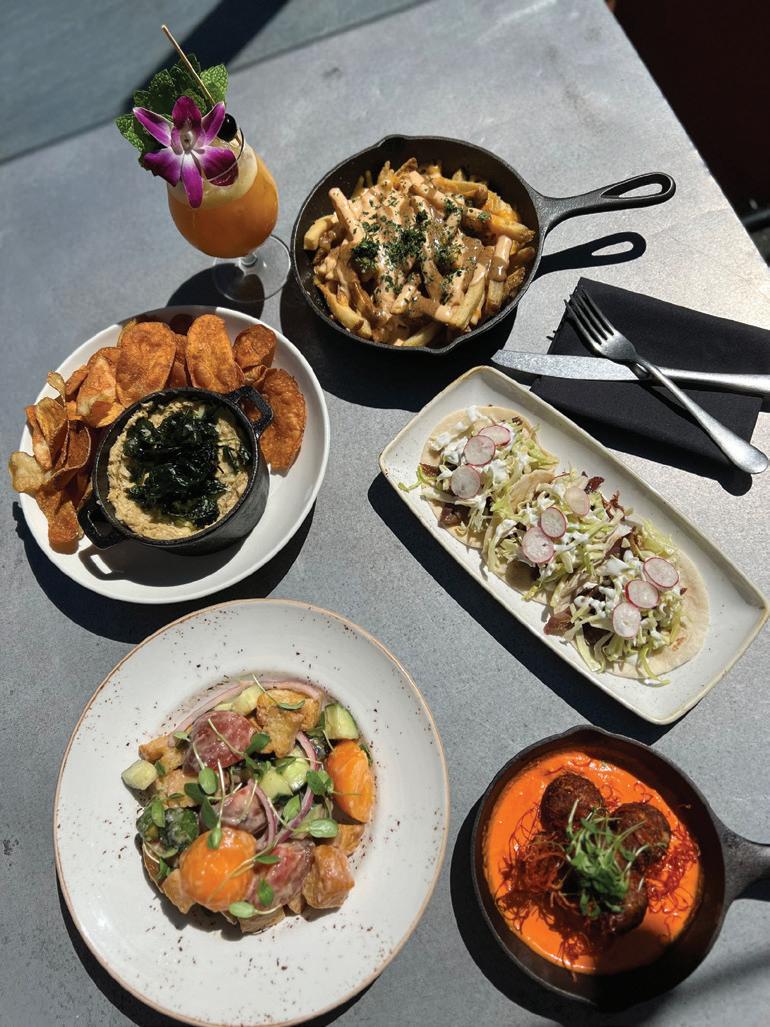


























































































Led by Rebecca Brown & Neil Ferron

Oct 2 - Nov 20



Plus, works from:
Artist-in-Residence: Harriet Salmon
Salmon creates a series of sculptural works from the tail components of small aircraft using traditional craft techniques.
Create your own FLATstronaut or have fun with the Make Your Own Art Gallery magnet activity.
Art from twenty-four artists explores flight with glass sculptures, experimental textiles, prints, photographs and paintings.
Jessica Dolence (NEW), RYAN! Feddersen, Joe Nix, Paul Rucker, Esmeralda Vasquez, Nina Vichayapai and Angelina Villalobos

Open through January 7, 2024!
It is taking every iota of willpower my brain and body are physically capable of mustering to keep myself from climbing onto the fourth-story rooftop of The Stranger’s offices on Maynard Avenue South, stepping up onto the ledge, and belting out the chorus of Barry Manilow’s “Looks Like We Made It” at the top of my lungs.
Because we did! We did make it. We made this issue of our fall Art + Performance magazine, yes, but we also made it through None of us knew what to expect when The Stranger returned to the printed page back in March. The spring 2023 Art + Performance magazine was our first print issue in three years. We forgot how to use InCopy. We didn’t know if people would pick us up. But you did! And with that support—that fervent support, I might add, as we ran out of copies so quickly that we had to print a second run—we are so fucking excited to be here now, doing it again.
Of course, we couldn’t have done it without you, the reader, but we also have to credit all of the artists in Seattle who just keep doing rad shit. This issue is packed with examples.
The Northwest Film Forum has kept the Local Sightings Film Festival going strong for 26 years now! In honor of the festival’s longevity, Charles Mudede takes
EDITOR
Rich Smith
ARTS EDITOR
Megan Seling
SENIOR STAFF WRITER
Charles Mudede
STAFF WRITER
Hannah Krieg,
Ashley Nerbovig, Vivian McCall
HEAD OF CONTENT
Jamie Reed
MANAGING EDITOR
Janey Wong
FOOD & DRINK EDITOR
Julianne Bell
MUSIC CALENDAR EDITOR
Audrey Vann
ARTS CALENDAR EDITOR
Lindsay Costello
CULTURE CALENDAR EDITOR
Shannon Lubetich
ART DIRECTOR
Corianton Hale
ASSOCIATE ART DIRECTOR
Anthony Keo

a deeper look into its very funny opening film, Fantasy A Gets a Mattress, and Chase Hutchinson does your homework for you in recommending five more Local Sightings movies you shouldn’t miss.
Speaking of things you shouldn’t miss: Rich Smith sits down with both past and present members of Death Cab to Cutie to discuss the 20th anniversary of their breakthrough album, Transatlanticism , a record that, one could argue, stole the Seattle sound flag from grunge’s cold and blistered hands. Sam Machkovech chats with author and former Amazon employee Kristi Coulter about her new book, Exit Interview. And we even uncovered the secret behind Cinerama’s beloved popcorn recipe!
Oh yeah, and I got to write about some things I love, too, including Friendship Dungeon, the new monthly midnight variety show produced by comedy wizards Emmett Montgomery and Derek Sheen, as well as the new art gallery Solas, Seattle’s only (?!) gallery exclusively dedicated to photography.
We made it! Me, you, us. We’re all still here. I’ll meet you on the roof.
Megan Seling Arts Editor, The Stranger
PRODUCTION
David Caplan, Feedback Graphics
REGIONAL SALES DIRECTOR
James Deeley
SALES OPERATIONS MANAGER
Evanne Hall
SENIOR ACCOUNT EXECUTIVES
Ben Demar, Katie Phoenix
EXECUTIVE DIRECTOR
Tracey Cataldo
MARKETING & PROMOTIONS DIRECTOR
Caroline Dodge
DIRECTOR OF VIDEO PRODUCTION
Shane Wahlund PODCASTS
Nancy Hartunian, Jesse Cramer
SOCIAL MEDIA MANAGER
Christian Parroco
PRESIDENT
Robert Crocker
COMPTROLLER
Katie Lake
COVER ART
Alex Sandvoss
Layout/Design: Corianton Hale
VP OF PRODUCT
Anthony Hecht
LEAD DEVELOPERS
Michael Crowl, Nick Nelson
TECH SUPPORT SPECIALIST
Grant Hendrix
DIRECTOR OF SALES
Diana Katz
CUSTOMER SOLUTIONS MANAGER
Kevin Shurtluff
CLIENT SOLUTIONS
REPRESENTATIVE
Campy Draper
CUSTOMER SOLUTIONS
REPRESENTATIVES
Eleanor Stavinoha, Taffy Marler
CIRCULATION MANAGER
Kevin Shurtluff
Publisher
Robert Crocker









Charles Mudede explores the fantastical, incoherent city found in Fantasy A Gets a Mattress, Chase Hutchinson recommends the can’t-miss movies at Local Sightings 2023, and we tell you how to make Cinerama’s beloved chocolate popcorn.
Jonathan Raban’s last book gives Charles Mudede the chance to dine with his departed friend one last time, and Sam Machkovech asks former Amazon employee Kristi Coulter about the secrets she spills in her new book, Exit Interview. And we hope you have some shelf space, because Andrew Engelson has rounded up all the local releases worth reading this fall.
The new Solas Gallery is Seattle’s only photographic art gallery. How? Plus: Five local photographers you can follow to make your Instagram feed less shitty, and a Q&A with Roq La Rue founder Kirsten Anderson as she celebrates the gallery’s 25th anniversary!
Learn more about To Gather, the dance performance that Nia-Amina Minor and David Rue say will have “Black and brown artists tinkling in the cosmos,” and laugh along with Friendship Dungeon, the monthly midnight variety show that’s keeping Seattle weird.
Current and former members of Death Cab for Cutie tell Rich Smith about all the secret Seattle places and sounds haunting their 2003 breakout album, Transatlanticism. And this year’s Freakout Festival will be a little different, but it’s gonna be Seattle’s best rock ‘n’ roll party.
Meet baker Charlie Dunmire, performer Kataka Corn, musician Jenn Champion, and breakfast sculptor Faith Charlotte.


Need a last-minute Halloween costume?
Just cut out this mask by illustrator Martin Ontiveros and you’re ready to party. Plus, you could win a prize!


Is a Film
a Rapper Looking for a
Yes. But So Is Living in Seattle.
BY CHARLES MUDEDE

When considering Fantasy A Gets a Mattress, it’s instructive to compare it with Know Your Place. David Norman Lewis and Noah Zoltan Sofian directed the former; Zia Mohajerjasbi, the latter. Both films are set in Seattle, and were shot around the same time (the end of the previous decade). In this way, Mattress and Place are about a Seattle radically transformed by a tech boom ignited by the e-commerce corporation Amazon.
During this period, the billions speculators spent on new office and luxury towers made the city’s skyline almost unrecognizable; and inflated housing values displaced the working classes, many of whom were people of color. One by one, iconic businesses—the city’s “soul”—closed their doors. The prices on menus exploded. The gig economy made the poor poorer. And those with deep pockets increasingly blamed progressive leaders for the negative externalities of the affordability crisis—homeless camps, petty crime, vanishing Seattle, and so on.
Though Mohajerjasbi’s film deals, in part, with gentrification and racist policing, he presents a coherent city. And this is the way it should be; it’s not for nothing we call cinema “the grand illusion.” The coherence of interiors or exteriors is fabricated because, as any filmmaker knows, location fidelity is almost next to impossible. In this art, it’s nothing but normal for, say, a Capitol Hill apartment building, a Beacon Hill sidewalk, a University District overpass, and a North-
gate parking lot to become, in the editing room with continuity and color correction, one and the same place.
Fantasy A Gets a Mattress does the exact opposite of this. It presents an incoherent city, and this has nothing to do with the limitations imposed on the directors by a very small budget. Technology has made the magic of editing the cheapest part of the filmmaking process. Getting the film in the can, even with a bargain-basement digital camera, is what sets a production’s bank account on fire. Incoherence is, with Mattress, the very logic of the work, which has at its center a Seattle rapper, Fantasy A (Alexander Hubbard), trying to become rich and famous—and who also dreams of obtaining a mattress he “can dream on.” The obstacles to these grand and modest goals include a ruthless landlord, a budding loan shark, low-wage work, and public transportation that’s never on time. Nothing gives him a break, even at the end of the movie.
The same goes for the person Fantasy A hires to shoot a music video, Asia Rose (Acacia Porter). They also face one challenge after another, one shock after another, one defeat after another. In Mattress, Seattle is a place that’s become inhospitable not only for Black artists, but any artist.
This no-placeness explains the film’s incoherence and powers its feverish plot and acting. Fantasy A is all over the city. He runs to Beacon Hill, plasters self-promotional posters all over the International District, tries to catch his breath in George-
town, listens to a homeless poet under the Mount Baker Station, and is cut no slack in the Central District. And this goes on and on and on. He hits wall after wall after wall. The city refuses to cohere, it refuses to connect its cultural levels, its neighborhoods, its economy. And it is here we find the political key to Mattress’ editing: poverty fragments a city that’s built for money. What money buys is a unified experience. Those who are behind the Seattle Is Dying movement, members of Safe Seattle, or who attack the only politician fully devoted to the working class and progressive policies, Kshama Sawant, have only this as their understanding: money makes the city. If you can afford to live here, you can get to work on time, or simply work from home, or not be dependent on underfunded public services. And the higher your income, the more coherent the city becomes. Fantasy A and others in his film are on the other side of this reality. For them, the poorer you are, the more dysfunctional, disconnected, and disorderly the city becomes.
Fantasy A, in the movie, is a funhouse mirror of the actual Fantasy A, who began posting flyers all over Seattle around the middle of the 2010s. (The former is played by the latter.) One of his flyers asked: “Want a Rapper for a Roommate?” It was clear this rapper could not afford to live in his own city. But that did not stop him from posting more flyers (some even reached Green Lake) nor sour his sense of humor. And this brings me to another aspect of
Mattress : it’s a funny movie But this has much to do with the absurdity of being poor in a city that’s obviously wealthy, in the material sense.
The homelessness, the greedy landlords, the loans with extortionate interest rates, the daily struggle to pay monthly bills or even the bus fare (a difficulty that even the film’s successful rapper is not spared) are as artificial as the set for a play or the props in a movie. But this artificiality, which is imposed and rigorously maintained by those who are paid handsomely to enforce the law, does not make them less real. They are as physical as blood, as the air entering and exiting the lungs, as the hunger that squeezes an empty stomach. Sleeping on the streets is painful. The body and clothes of a person who can’t access a washroom or a laundry facility will not smell like flowers.
This is the point that unites the comic surrealism of Mattress with that of Boots Riley’s Sorry to Bother You. What do these works show? How surreal it is to live in a world where what is most unreal (poverty) has the most reality. Yes, Fantasy A searching for a mattress is absurd, but not nearly as absurd as throwing people on the streets and then sweeping them from the streets.
See Fantasy A Gets a Mattress during Local Sightings Film Festival at Northwest Film Forum Friday, September 15, at 7 pm. It’s also available to stream online September 15-24. Visit nwfilmforum.org for more information. ■




BY CHASE HUTCHINSON
Aitamaako’tamisskapi Natosi: Before the Sun
Canada, 2023, 89 min., Dir. Banchi Hanuse See it at Northwest Film Forum Sunday, September 17 at 8 pm and online September 15-24.
There are many sports documentaries in the world, but few are as patient and focused as this one from director Banchi Hanuse about the thrilling and terrifying world of bareback relay horse racing. Rider Logan Red Crow is a young Siksika woman who is training after recently taking a major fall that still could have been much worse as we are shown in clips of the serious accidents that happen as competitors leap from horse to horse. While those tense moments remain an integral part of the documen -
tary, what makes Aitamaako’tamisskapi Natosi a cut above is everything that takes place between the races. We get to see Red Crow’s day-to-day life, from waking up at the crack of dawn to the intense training she goes through to get ready— the film expands into a gentle slice-of-life documentary that isn’t afraid to slow down and reflect on questions beyond the sport
back home
Canada, 2022, 90 min., Dir. Nisha Platzer
See it at Northwest Film Forum Sunday, September 24 at 4:30 pm.
An emotionally shattering and formally bold documentary that immerses us in the fragments of memory more than any conventionally made film could dream of,
Nisha Platzer’s back home is the pinnacle of how cinema can become a boundless act of remembrance. In this case, it is Platzer seeking to remember her brother Josh, who took his own life when she was just 11. Two decades later, she crafted this expansive yet intimate film over the course of five years. Through raw conversations with those who knew and loved him, 16 mm, and Super8 film, Platzer undertakes a poetic pilgrimage back through time, which we see play out in the present, where the loss still lingers as it always and forever will. Each striking shot and delicate cut paints a loving portrait of someone who has since departed, though now lives on in this grand act of grieving. Without shying away from all the immense pain on display, as we hear each voice reflect on Josh, his life, and his death, Platzer
is able to gradually excavate a profoundly honest path towards healing. It is a film that reaches parts of our minds that we never thought to look into, drawing us deeper into ourselves and our relationship with each other in a radical act of intense empathy.
CATS TWO
United States, 2023, 68 min., Dir. Jacob Jones & Curran Foster
See it at Northwest Film Forum Saturday, September 16 at 5 pm and online September 15-24.
No film festival would be complete without a silly entry that, while rough around the edges, makes the most of its more scrappy sensibility. Building off the works of T.S. Eliot and Andrew Lloyd Webber, CATS TWO is an unau-
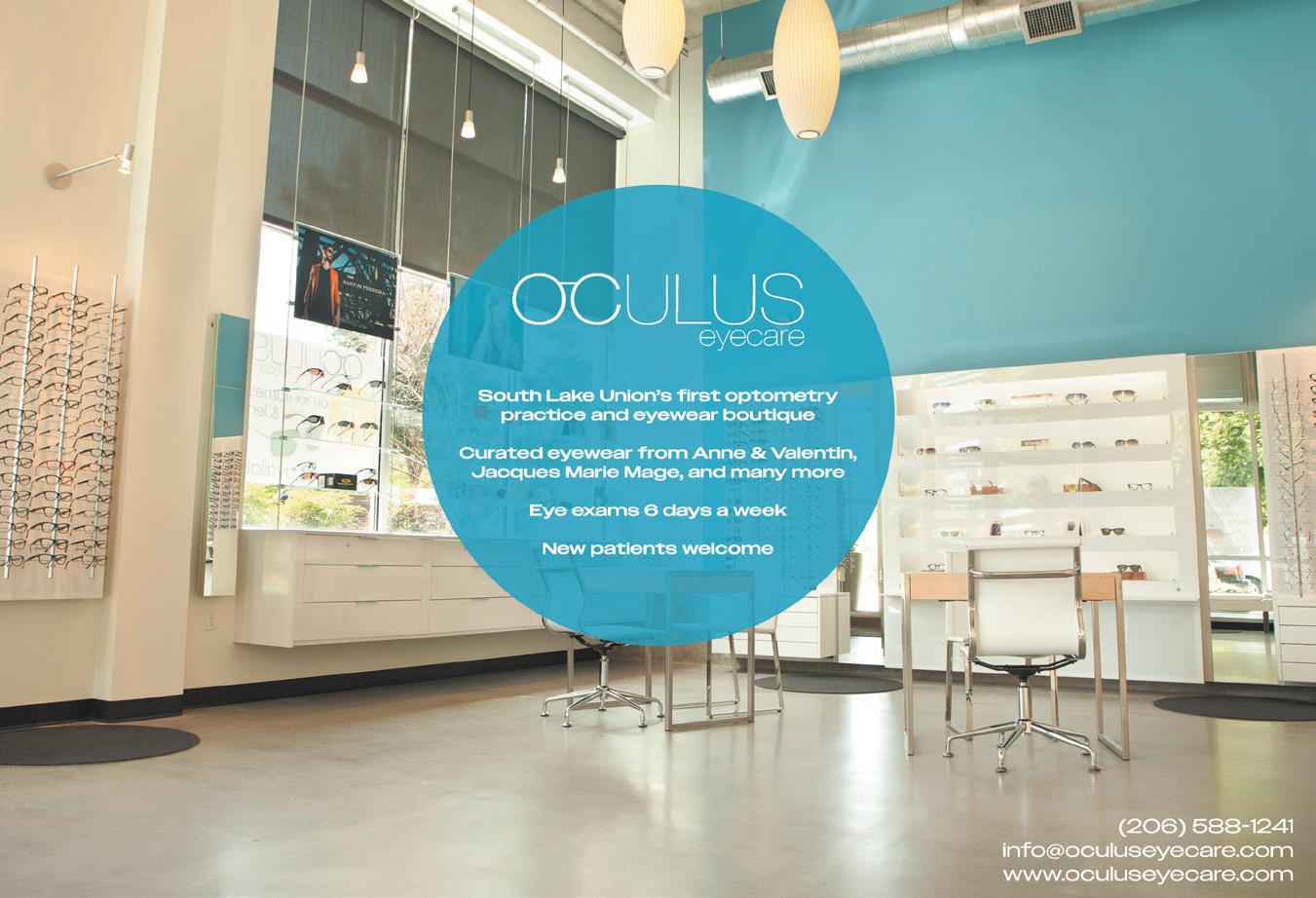



thorized musical that feels like a fever dream (complimentary). Local directors Jacob Jones and Curran Foster make use of plenty of puppetry and absurd animation, and the jokes are not solely tied to their source material—that’s merely one jumping-off point. There’s everything from a feline interpretation of Eadweard Muybridge’s iconic series of photos known as the Horse in Motion to a cartoon cat “painting” a notable photograph on screen for us. It all makes for what feels most like a stream-of-consciousness spoof where each new sequence brings with it a variety of artistic styles and techniques strung together by live-action interludes. While it is very dependent on the individual whether or not one should partake in some substances prior to any of this year’s Local Sightings programming, CATS TWO would probably be the best entry to pair them with. Some of the cat puppets might then live in your nightmares forever, but that’s cinema, baby.

Even Hell Has Its Heroes United States, 2022, USA, 109 min., Dir. Clyde Petersen
See it at Northwest Film Forum Saturday, September 16 at 6:30 and online September 15-24 (only available to WA State residents).
A comprehensive look at the history and legacy of the metal band Earth, Even Hell Has Its Heroes is a true achievement of a docu-
mentary in every sense as its sonic resonance echoes just as the group’s meditative music does decades later. Entertaining as all hell, whether you’ve followed Earth for years or have yet to be graced by their music, Even Hell is the absolute best film of this year’s festival, and it carves out an irreplaceable place in Washington cinema history. More than a recounting of the group’s origins, the film eschews typical documentary conventions, with its overreliance on talking heads, by interweaving interviews with the footage itself. It is a work befitting the grandiosity of Earth’s creations that takes us fully into the minds of those behind it and illuminates how they left their mark on a genre that will forever owe them a musical debt. There is a darkness, but an earned vibrancy emerges as well.
Makyo
Canada, 2023, 97 min., Dir. Bijan Karim
See it at Northwest Film Forum Saturday, September 23 at 4:30 pm and online September 15-24.
There are many challenging films in this year’s Local Sightings lineup, but Makyo might be the toughest cinematic pill to swallow. It is still worth experiencing. Directed by Bijan Karim, who wrote the film with lead actor Alden Doyle, Makyo takes us into the life of Abner (Doyle), who has grown disillusioned with and disconnected from the world around him. This can calcify into coldness, like when he tells his girlfriend that speaking aloud about the beauty of nature compromises it, but the film increasingly hits home. As we accompany Abner through every step of his growing uncertainty and attempts to sort through the life he has been living, the film then settles into an almost melancholic malaise. This is all by design, as it deconstructs the painfully relatable and authentic ways we

Delving into the transcendent power of sacred music, Global Rhythms presents five acts representing five spiritual practices from across the world.





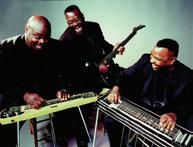
Bab L’Bluz 9/28/2023, 7:30 PM Revolutionary FrenchMoroccan Rock
The Klezmatics 12/7/2023, 7:30 PM Hanukkah Dance Party
Yungchen Lhamo 1/26/2024, 7:30 PM Soul-Stirring Tibetan Sounds
Justin Adams & Mauro Durante with special guest Ganesh Rajagopalan 3/1/2024, 7:30 PM Global Grooves: Music from North Africa, Italy, and India
The Campbell Brothers 5/4/2024, 7:30 PM Sacred Steel Revival 2023 2024
Come early and immerse yourself in the flavors of the culture before the show with specialty food and drinks available for purchase in The Lobby. Check out our website for information on our food vendors. thsea.org

SPONSORS:


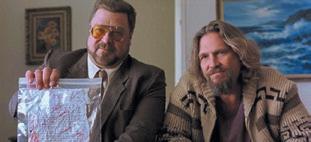









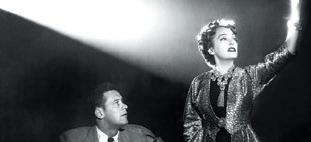



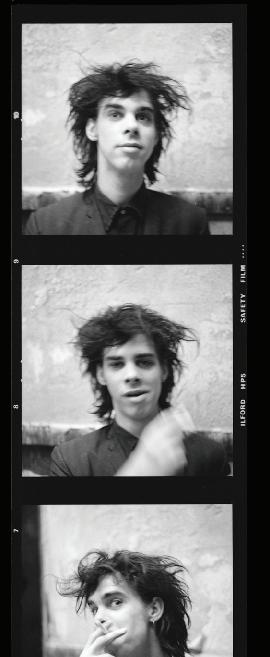

try to make sense of the dread that can be found in everyday existence and threatens to consume us at every turn. For all the ways the film holds us at a distance, both
in how it is shot and its thematic interests, it still creates an evocative exploration of a search for salvation where there may be none to be found. ■
Earlier this year, SIFF announced that it had purchased the Cinerama from Paul Allen’s estate. While an official opening date hasn’t yet been confirmed, the organization did promise that the theater’s beloved chocolate popcorn will be back on the menu.
To tide you over, we got in the kitchen to perfect a copy-cat version of the popular snack, with intrepid Stranger columnist and former Cinerama employee Nathalie Graham confirming a few of the details. Enjoy!

CINERAMA’S FAMOUS CHOCOLATE POPCORN
You’ll Need:
• 3 tablespoons coconut oil
• ½ cup popcorn kernels
• ½ cup chocolate-flavored Gold Medal Glaze Pop powder (give or take—use more for a stronger flavor, less for a lighter touch)
Method:
• Using a large, heavy-bottomed pot with a lid (or a stovetop popcorn maker such as a Whirley-Pop Popcorn Popper), melt the coconut oil over medium-high heat.
• Add the Glaze Pop and kernels and quickly stir until everything is combined and the sugar starts to dissolve and lightly sizzle at the edges.
• Put the lid on the pot and give the pot a good shake every 10-15 seconds to keep the mixture from burning. Keep shaking as the popcorn begins to pop.
• Once the popping has slowed down, remove the pot from the heat, dump the popcorn in a bowl, and enjoy!
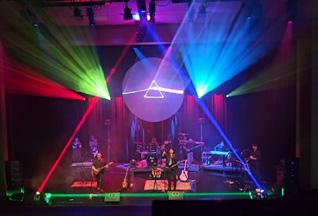

Tickets at: edmondscenterforthearts.org Band Info at: artemidorusband.com

For those among us who were of the age to be astounded by the advent of Pink Floyd 50 years ago, Artemidorus will renew the lingering space that only Dark Side of the Moon can ever fill. Artemidorus authentically delivers two Pink Floyd albums, beginning to end, with integrity and honor. Slick Lasers of Seattle has worked closely with Artemidorus to include a visual experience second to none, beat by beat. If you are a Pink Floyd fan, DO NOT MISS THIS INTIMATE EXPERIENCE. Dark Side of the Moon, Wish You Were Here, and more!




Goodnight, My Old Friend
BY CHARLES MUDEDE

Ivisited Jonathan Raban a year after his stroke in 2011. Though confined to a wheelchair, the Queen Anne-based British author of Bad Land, Passage to Juneau, and other masterpieces insisted that he alone make dinner with the arm and leg that weren’t paralyzed by a brain attack that lasted the better part of a long summer day. He also ordered me to stay away from the stove, which was warming an Indian-style lamb stew and cooking basmati rice. He never trusted me in his kitchen.
What he wanted from me, the man young enough to be his son, was a lively conversation about local and national and international politics, the books he was reading, the book he was writing, and a cigarette from the pack I just happened to bring with me. (Raban: “I’m trying to quit smoking, but do you have a cigarette on you? Me: “It just so happens that I do”—I almost always leave my cigarettes at home in a sin drawer that also contains a variety of joints.) He also did not want me to uncork the bottle of red wine. He
could do that with his one good hand.
When we got around to the topic of books, Raban talked at length about contemporary brain science literature. I asked if he had heard of the then-new and exciting American philosopher Alva Noë. He hadn’t. He was interested. What was Noë about? In 2009, I explained, he published a book, Out of Our Heads, which presented this original theory about the stuff of cognition: The brain is not inside your head but outside of it as well. We have, in a sense, a participatory brain.
This is what I wrote about Noë for The Stranger in 2009:
The main project of Alva Noë’s new book Out of Our Heads: Why You Are Not Your Brain, and Other Lessons from the Biology of Consciousness is the liberation of the brain from the prison of Cartesian internalism [and also dualism]. For him, the brain is seen not only as a part of the body but also a part of the outside world. The two, internal and external, can not be









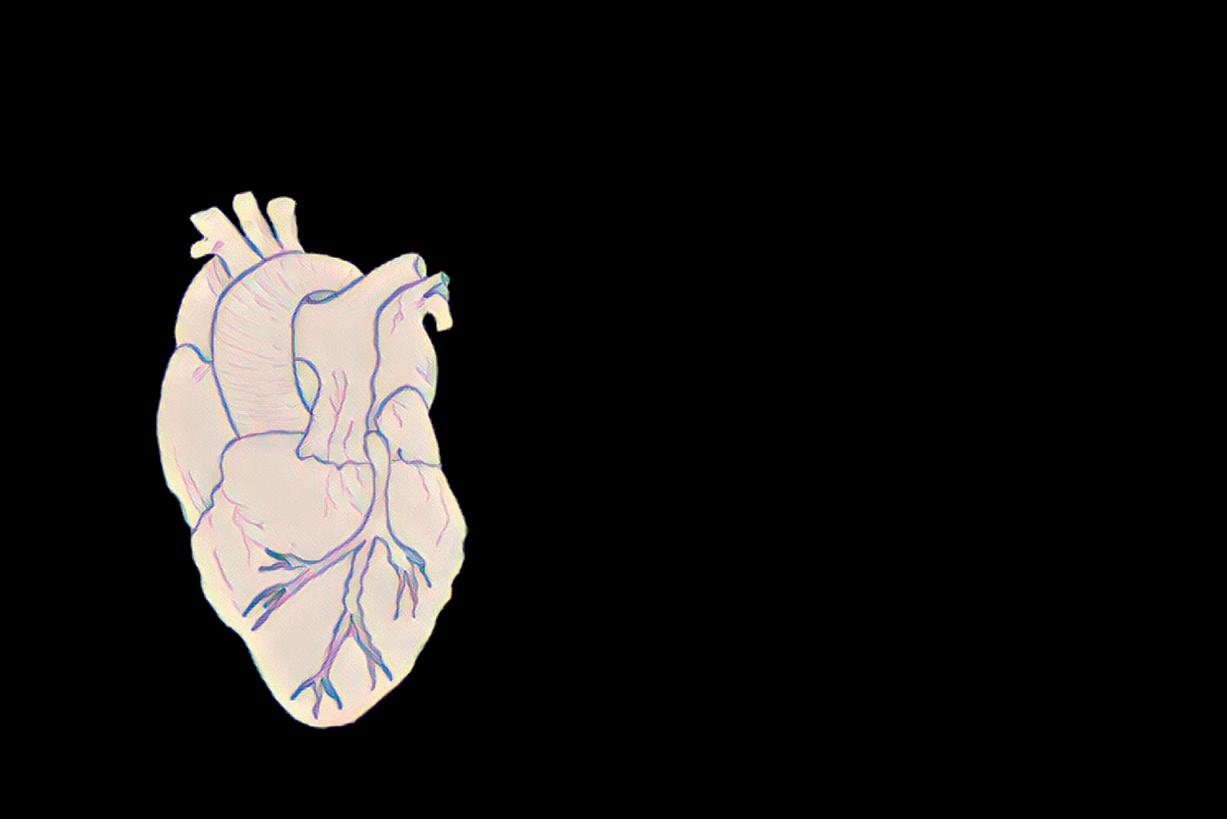
separated. The mind is not a static container of impressions but a constant engagement with what is outside. The mind is you, your body, and the world around your body.
Just as I was about to describe the juiciest part of this theory, I caught a great change in Raban’s face. It had transformed from interested to: Not having any of it. Had I lost my mind? The brain can only be inside the head. The very idea of an outside was just out of the question. My visible disappointment of his complete rejection of Noë made no impression on Raban, who dismissively twirled the stem of a wine glass. Now was the time to switch the topic.
The stroke had, it seemed, spared the part of his brain that communicates (talks, reads, and writes), a key feature of a brain that’s obviously not isolated but always already with other brains. (I kept the social brain theory to myself that night.) This must mean he’s working on a book or essay. And he was. What was it about? Something of a cultural history of smoking, Raban explained. The gist: He came from a generation of heavy smokers; all of his friends smoked, his father smoked, his grandmother smoked, and so on. Raban also believed the stroke was the heavy price he paid for his own and long addiction to tobacco.
After dinner (which he served), several glasses of wine, and a couple of smokes, we called it a night and I walked down to the bus stop that starts the Metro’s Route 3 bus. (It’s next to Seattle Pacific University.)
Seven months after Raban died (January 17, 2023—the day the stroke apparently caught up with him), I read his final book, Father and Son: A Memoir . It’s just over 300 pages, and it says very little about smoking and smokers, who appear only as ghostly asides in the text: “Caroline [Blackwood] had died in a New York hotel room in 1996, aged sixty-four, of lung cancer brought on by a defiant lifelong addiction to cigarettes.” The book is also missing an important final chapter that would have provided a very revealing twist to its main theme: the relationship between a father and his son. But Peter Raban, who died in 1996, and Jonathan Raban, who died at Swedish Hospital on First Hill at the age of 80, are, in this work, less father and son and more, chapter after chapter, two ships passing in the night. The father’s time mostly occurs between 1939 and 1945; the son’s time happens between June and August of 2011. The father spent his years fighting Nazis in North Africa and Italy (he also had a spell in Palestine after the war concluded). The son spent his summer weeks in Swedish Hospital’s rehabilitation ward.
The chapters concerning Peter Raban (in his mid-20s) and the letters he exchanged with his new wife, Monica, (the two married and conceived Jonathan not long before he was deployed), are written with the mastery one expects of a Raban novel or travel memoir: his impeccable historical scholarship, his erudition of all things nautical and geographical, and, most importantly, his command of the language.
The sections concerning his stroke and time in the hospital, however, are unusu -
ally conversational. Indeed, while reading these chapters, I could see his ghost talking to me from across the dinner table on the third floor of his Queen Anne home. I could see the wine glasses, the smoke hanging over his head, the nearly full ashtray, the thickish carpet, and the dreamy poster for his penultimate novel, Waxwings, which hung over a wine rack. This sharp split in style is not found, in my opinion, in his other memoirs, particularly Passage to Juneau , which shares a sim -
“I could see his ghost talking to me from across the dinner table on the third floor of his Queen Anne home.”
ilar structure with Father and Son. Was this split a consequence of his stroke? Not sure. And nor, to be honest, is Raban. He writes:
In the case of my own stroke, I’ve now spent more than eleven years asking myself two questions every writing day: What have I lost? and Am I fooling myself? But I find both questions maddeningly unanswerable.
This preoccupation with the true state of his mind is a major theme in the book. Raban makes it clear from the beginning that what matters to him most is his brain. The body can pretty much rot in hell, for all he cares.
When I got home from the rehab ward, all I really wanted was to be able to return to a life of solitary scholarship, of reading and writing. Sailing and hiking were activities I could readily forgo, and so were driving, eating out in restaurants, and shopping (what else was Amazon for?). When I boiled my life down to these bare dimensions, I needed to learn just three things: to be able to walk a bit, to make competent “transfers [from bed to wheelchair, for example],” and to negotiate stairs. Anything else would be gravy on the side.
We never had a conversation about his dogged Cartesianism, but if we did I would have told him that the theories of brain scientists who see the brain and body as one, such as Antonio Damasio, the author of Descartes’ Error: Emotion, Reason, and the Human Brain, have the most explanatory power. But that conversation will never happen. And, I must admit, that it probably would not have happened even if he were still alive. Goodnight, my old friend.
Father and Son: A Memoir by Jonathan Raban will be released September 19 on Knopf. John Freeman, Charles Mudede, and Julia Raban will discuss Father and Son at Elliott Bay Book Company on Tuesday, October 24 at 7 pm. ■










BY SAM MACHKOVECH

Many of Amazon’s worst workplace elements have been chronicled for years, from drivers pissing into bottles when they’re unable to take a bathroom break to flagrant anti-union activity. But there’s a different, more nuanced story of the megacorp’s chaos and male fragility, now available in Exit Interview, a memoir from a 12-year Amazon vet who got sober, ran screaming, and put together a darkly hilarious tale of her experiences there. We caught up with author and Seattleite Kristi Coulter for an Exit Interview interview.
Now that the book is out, how do you feel about Amazon actually reading it?
I’ve gotten so many notes from people I’ve never met who’ve worked at Amazon all over, in like Minneapolis or Munich. People at Amazon, especially women, are dying to
read this book. I remember joking with my publisher early on: if we only sell a copy to everyone who works at Amazon, we’d make a profit.
For a lot of Amazon stuff, I wasn’t revealing anything that’s not publicly available already. That was really important to me because I wanted this to be a personal book. I had friends who were like, “I bet there’ll be Congressional hearings after your book.” I don’t see what they’d be about! It’s not that book.
Right, this isn’t a bullet-point collection of world-rollicking allegations. Your stories range from unsurprising to eww. It’s more a detailed chronicling of assholes all the way down.
Yeah, there’s a lot of them. I will say, most of the people that I worked with, I actually like quite a bit. They’re smart, creative,

sometimes stoic [laughs]. But Amazon rewards a certain coldness and aggression. It also puts people under such psychotic pressure that it brings out the worst. I have a feeling there are people that I had bad experiences with that, under different circumstances, I would think, “They’re not so bad.”
You make the case that there’s something universal here—that Amazon’s problems are human problems.
Amazon is an unusually brutal place to work, but a lot of it is about people under pressure. Even the guy who at one point directly tells me I’m “stupid” and yells at me, I was like, even he was under pressure. Then I think about the super-senior executives—I see on social media, “fat-cat execs don’t do anything.” At Amazon, at least, those guys work their asses off. It’s heart-attack-at-50
kind of work. I don’t know why, like, they’re all worth $20-30 million, but they kill themselves. So I figured, even this guy above me is getting it from Jeff Bezos, and it’s a fountain, you know. A shit fountain, I guess.
“So many parts of Amazon are like kids putting on a show in the barn.”
Also, I wanted to write about ambition in women through myself. I’m very ambitious—I always have been. When we hear that women are ambitious, we have certain associations, so I thought, well, let’s look at that. Does it mean I was cutthroat? Probably




sometimes. Is there something wrong with it? Maybe. Does it mean I put up with shit I wouldn’t have otherwise? Yeah! I wanted to write about ambition as a human emotion that women have, just like men. Writing the book forced me to get more comfortable with the idea that ambition is… I was gonna say that it’s a fine thing, that it can be a good quality. But also, it doesn’t matter if it’s a good quality or not! I have it! I have the quality of ambition. I always have.
The Amazon you describe doesn’t make space for that kind of ambition, even when you’re told you can’t progress further at the company unless you “change the world.”
That was my lowest moment, at a point when my career was going great. For this VP to sit there and say, “Just change the world”? Promotions at Amazon are chaotic for everyone. The criteria are all over the place, but there’s a specific, tactical, mapped version for a lot of people there. Men all around me had been promoted, and as far as I knew they were all good at their jobs, but there aren’t that many chances to change the world . At Amazon, like any company, you’re doing your TPS reports and your granular things. I asked this man, “Well, what would I do? What results would you want to see?” The most specific he would get was, “wheelbarrows of money.” [Laughs] I was just like, I can’t believe this. I’m at the peak of my career. I am running major businesses. And this person who I’ve known for years and is a fan of mine, he won’t have a serious conversation. That is crazy-making.
What about your story have you noticed surprises people?
The chaos. There is this belief that Amazon is this well-oiled machine that is coming to take over the planet. But so many parts of Amazon are like kids putting on a show in the barn. I remember when Amazon Publishing started, people in the industry predicted we were going to steamroll them. But there were only 13 of us. Our entire company’s calendar was a literal whiteboard. We were calculating royalties in Excel manually. It was frantic.
There’s lots about duct tape and panic being Amazon’s primary binding agents—but your example also gets to how cheap the company seems.
[Laughs] You hear about tech giants like Google with their own dry cleaners and hairdressers and all that stuff. People think Amazon is like that. Amazon is austere. My monitor died once, and I had to go pick up a new one. They couldn’t bring it to my building. I had to carry it four blocks!
I’m sorry, the company that runs Amazon Prime couldn’t deliver your big, boxed monitor?
Right? In my role, that was expensive time for me to waste. Here I am walking through Belltown with a fucking box, I don’t think it even had a handle, and I hadn’t expected it so I had other stuff with me. And all around, there’s zero amenities. You get a hundred dollars off the website a year, and there’s a code that you have to find and they don’t remind you. You have to remember to
go get it every year. After a couple years, I just forgot it existed.
Some of the anecdotes in this book are wild, like your colleague spending days insisting that a store’s “broccoli rabe” dish be renamed “broccoli rape,” despite your outcries.
That kind of thing happened pretty often. In my first book, there’s a part where I was the one woman on a panel hosted by Amazon for interns, and a woman asks us, “What’s it like to be here as a woman?” I gave a very diplomatic perspective, and then all the men on the panel jumped in to say that I was wrong. They were like, “This is a great company for women!” I was like I literally am the only one who could answer that. That was for me.
Is the male fragility in this book representative of the company as a whole?
I think so. We’re talking about hundreds of thousands of people, and many of the men I worked with are perfectly lovely. But especially in leadership, there’s a certain type of man who is very fragile—though this isn’t Amazon specific—wwvwhere what gets to them is the idea that they might not be egalitarian. They can’t see that it’s not about them personally. It’s about systems. There are some guys at Amazon who, If you tell them, “It’s strange that most consumer purchases are controlled by women and yet there are no women in senior [leadership],” they think you’re attacking them personally. They’ll say, it’s important to understand that women often have other priorities in life, or women are too smart to want these jobs.
They can’t just sit honestly and ask, what can we do to change it?
Hard to do that at a company where Jeff Bezos promotes internal stories written by men about what it’s like at Amazon to be a woman
This guy at Amazon had written a blog post on LinkedIn in response to Jodi Kantor’s big New York Times piece about staffers crying at their desks and all that. First, he says, “I’ve been here 18 months, so I know a few things.” I was like, ohhh, I’m looking at him like an old sailor, saying, “Come on, landlubber.” He goes on about what a great company Amazon was for women. It landed on an internal email list, and I decided to reply, gently and diplomatically: “That wasn’t appropriate for you to speak to. You’re not a woman. You don’t—you can’t know what it’s like.”
So when Jeff Bezos emailed the whole company, he included a link to that guy’s post. That’s an endorsement. Jeff fucking Bezos sent that to a milllion people. We had a chance, while so many articles about gender were coming up, Jeff had a chance to suggest things to look at, at the very least about women, let alone other systems of privilege even I benefit from. Instead, he said, “Look at this glad-handing jackass’s blog post, I love it.” That’s when the concept of loyalty fell away for me fast.
Read a longer version of this interview at thestranger.com. Kristi Coulter will discuss Exit Interview with Claire Dederer at Third Place Books, Seward Park, on Monday, September 11 at 7 pm. ■

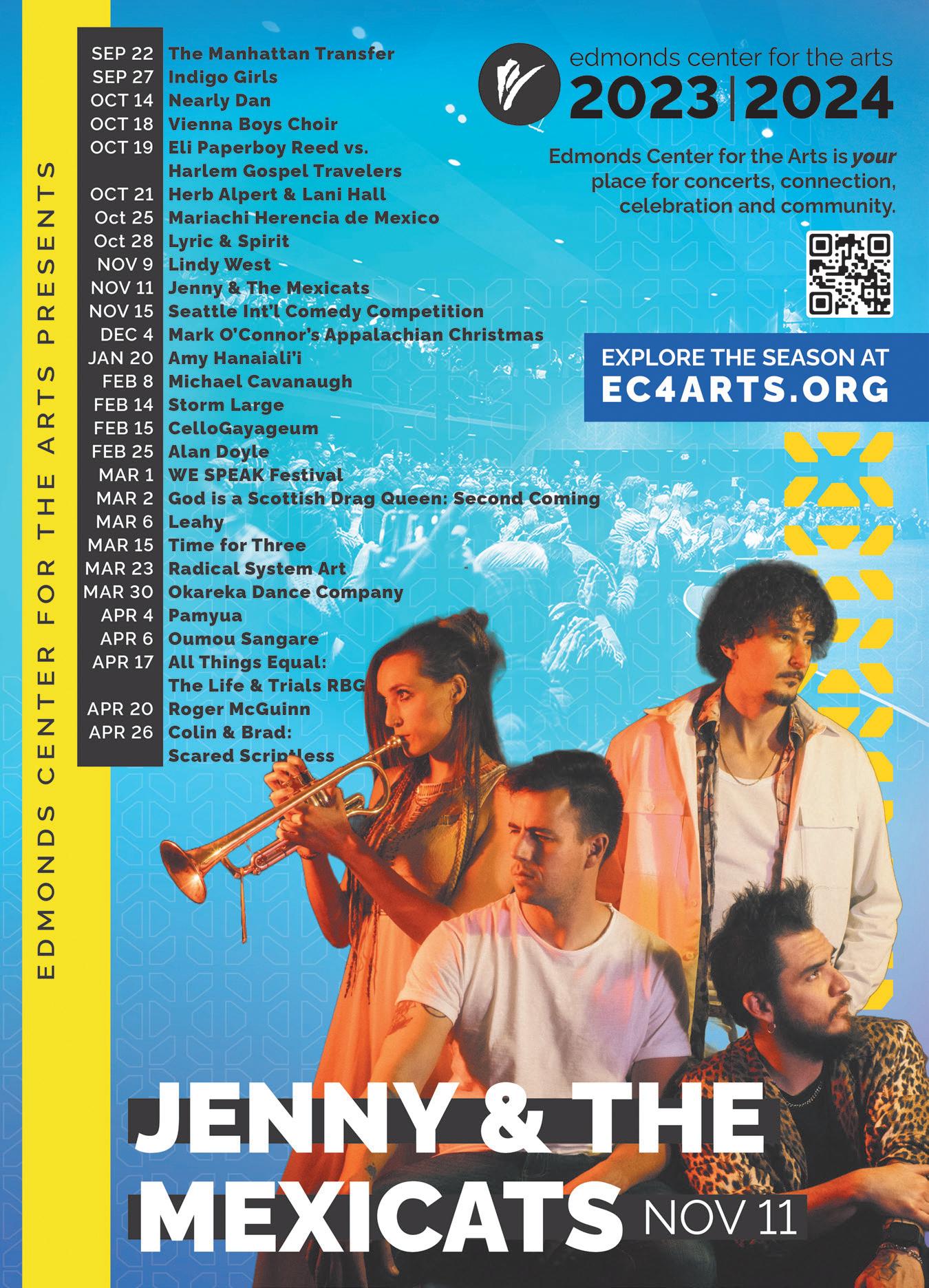
BY ANDREW ENGELSON





At a recent dinner party, a friend lamented that books don’t really hold a central place in American culture anymore. I disagreed.
And the facts seem to back me up: though book sales in the US took a slight dip in 2023, in the previous year print books hit an all-time sales record of 826 million. Apparently, the industry is slowly diversifying and we’re not all buying the same bestsellers (in fact, sales of “backlist”—books that didn’t come out in the past year—have been rising dramatically). And though publishing has a long way to go in terms of foregrounding writers of color, it’s encouraging to see writers like Ibram X. Kendi, Celeste Ng, and Colson Whitehead on those bestseller lists.
It’s clear the predicted demise of publishing hasn’t quite materialized: there are still lines to purchase books at Elliott Bay Book Company and readings are still well-attended, whether it’s at Seattle Arts & Lectures or the upstart all-poetry bookshop Open Books. So in the interest of keeping Seattle biblio-nerdy, here’s a short list of books by local writers you should buy (and read!) this autumn.
Touching the Art by
Mattilda Bernstein Sycamore
Out November 7 on Soft Skull Press
“When I was a child, Gladys told me creativity meant everything. I believed this myth, and it saved me.” This is how Seattle-based queer writer Mattilda Bernstein Sycamore begins to articulate her complicated relationship with her late grandmother, an abstract painter based in Baltimore who was
both an independent-minded woman but also a person infected with the homophobia of her times.
In this hybrid book that blends memoir, social history, and art criticism, the author of The Freezer Door and Sketchstasy takes an unsparing look at her own trauma resulting from sexual abuse as a child, as well as the unique place her grandmother occupied in her creative life, both as an inspiration and a hindrance.
Sycamore has excavated some of this childhood trauma in her previous books, but in Touching the Art confronts it with pointblank honesty. In addition, the exploration of her grandmother’s life and work appears to be both nuanced and full of anger: “...as soon as I came into my own as a writer, as soon as my work became noticeably queer, sexually and politically saturated, she called it vulgar,” Sycamore writes. “Why are you wasting your talent, she would ask me, over and over, until it became a refrain.”
I think many of us are glad that Sycamore, who’s one hell of a writer, didn’t listen to Gladys.
Mattilda Bernstein Sycamore reads from Touching the Art at Seattle Art Museum, Brotman Forum on Saturday, October 15 at 3 pm. Copies of the book will be available sale weeks ahead of its official release date.
No Neutral by Shin Yu Pai Out September 12 on Empty Bowl Press
Seattle Civic Poet Shin Yu Pai is a very busy person. In her latest collection of verse, No Neutral, she offers a mix of social activism, poignant family moments, and unblinking de-

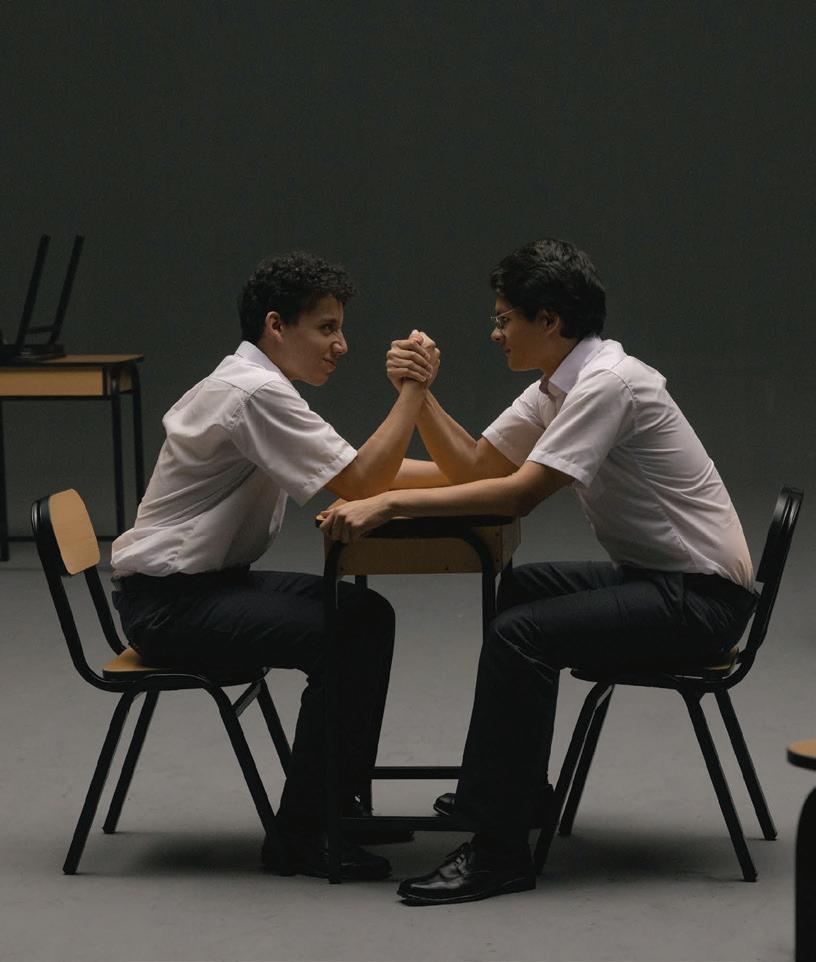



scriptions of racism experienced as an Asian American woman. When she’s not writing or speaking up for poetry or creating site-specific environmental art such as her installation HEIRLOOM, in which she used stickers and sunlike to print words on ripening apples in Piper’s Orchard in Carkeek Park, Pai also hosts KUOW’s Ten Thousand Things, a podcast about the Asian American experience.
Structured around simple couplets that land like one-two punches, the poems in No Neutral set out “to listen, name what is inhumane.” One moment Pai is quietly opening a packet of crackers at 6 am with her son, who tells her, “let’s be quiet/because we love dad.” The next moment she’s bearing witness to a racist 1909 Washington State law that allowed a company involved in the 2015 fatal Ride the Ducks collision to avoid paying damages to the family of a young Korean woman killed in the crash. Pai, never one to slow down, is also publishing a collaboration with artist Justin Rueff called Less Desolate in November: a series of haikus and visual reflections on life during the pandemic in the Pacific Northwest.
Shi Yu Pai reads from No Neutral at Elliott Bay Book Company on Thursday, September 28, at 7 pm.
Again and Again by Jonathan Evison Out November 7 on Dutton
Prolific Bainbridge Island novelist Jonathan Evison has become something like our local version of Joyce Carol Oates (minus being horrible on Twitter) by hammering out a substantial new novel every couple of years.
Recently, the author of The Revised Fundamentals of Caregiving, West of Here, and All About Lulu found himself in a book-banning controversy when a group of parents in Texas demanded that his 2018 novel Lawn Boy be removed from a school library after taking offense to the gay narrator’s description of a sexual incident in his childhood. Plenty of other uptight school districts followed suit, even though it’s a novel intended for grown-ups. Hopefully, Evison’s book sales are going through the roof as a result of the unwanted censorship attention.
Meanwhile, his latest is Again and Again, which centers on a charming, if slightly corny, premise: an elderly man in a nursing home claims to have lived various lives over the past thousand years and recounts stories of those previous incarnations to a skeptical nurse’s assistant. The narrator’s Scheherazade-style tales range from that of a young thief in medieval Spain to a US Marine who was at the battle of Guadalcanal, to Oscar Wilde’s cat.
Jonathan Evison reads from Again and Again at Third Place Books, Lake Forest Park, on Wednesday, November 8 at 7 pm.
Washington’s Gay General: The Legends and Loves of Baron von Steuben by Josh Trujillo with illustrationsby Levi Hastings Out August 15 on Abrams Books
Raise your hand if you knew that one of the founders of the US military, a Prussian gen-
eral who fought with George Washington at Valley Forge, was out and flamboyantly gay. I sure didn’t. And in a new graphic novel biography, Washington’s Gay General, LAbased writer Josh Trujillo and Seattle illustrator Levi Hastings (who’s had a bunch of artwork published in The Stranger) also express their surprise at discovering this long-ignored queer chapter in US history.
What did make it into previous history books was the fact that Von Steuben came from Europe to assist the rag-tag rebels of the American Revolution in becoming a more disciplined fighting force. What’s less known, and which Trujillo and Hastings tell with sexy but honest exuberance, is that von Steuben had multiple male lovers, hosted naked drinking parties, and was essentially “out” as homosexual before the term had literally been invented.
Trujillo and Hastings infuse the story of the man they call “America’s Founding Daddy” with reflections about their own gay awakening and thoughts on why von Steuben’s story has remained hidden in the back closets of libraries and archives until now.
Levi Hastings discusses Washington’s Gay General at Elliott Bay Book Company on Wednesday, September 27 at 7 pm.
Heartbreak City: Seattle Sports and the Unmet Promise of Urban Progress by Shaun Scott
Out in October on University of Washington Press
Political activist and avid sports fan Shaun Scott, who ran against Alex Pedersen for city council and lost, recovered from that defeat and went on to write what looks to be an extremely well-researched and lively history of sports in Seattle through the lens of marginalized communities and people of color.
As anyone who’s paid attention to sports in this city can tell you, it’s inextricable from politics and social movements, as much as owners hope to stay above it all. Scott daylights some fascinating stories, like that time the city’s Black baseball team beat the Seattle Police Department’s team in the 1920s and found later that fans who were parked outside the ballfield received tickets in retaliation. There’s the story of the city’s segregated golf courses, the NFL labor strike of 1987, and the short-lived optimism of a white-majority city rooting for the nearly all-Black 1979 championship Sonics team. And of course, Scott looks at the city’s sports franchise with the most championships, the WNBA’s Storm, and the relatively low salaries stars such as Sue Bird are paid in relation to players for men’s teams.
If the Mariners defy their moribund history and keep winning games, Scott might have to update a future edition with an epilogue. In the meantime, grab some garlic fries and read this book, and all the others, when the sportsball gets boring.
Shaun Scott reads from Heartbreak City: Seattle Sports and the Unmet Promise of Urban Progress, at Town Hall Wednesday, November 29. ■




Intimate stories. Interwoven music. Breathtaking physicality. This, and much more, is what you can expect upon your return to Seattle Rep for an all-new season in fall 2023.


Solas Is the Photo-Focused Art Gallery Seattle Has Been Missing
BY MEGAN SELING
Film photography has been creeping back into the mainstream for years, and it’s not just because old folks are looking to relive their glory days of Dektol and silver halide.
In 2015 Polaroid CEO Scott Hardy credited Taylor Swift for the company’s resurgence after the singer featured the iconic instant prints as part of 1989’s album art and packaging. In 2022 the New York Times reported that “Gen Z and millennials are largely fueling [the] increased interest” in both 35 mm film and SLR cameras.
The pastime appears to be gaining new ground here in Seattle, too. Long-standing photo havens including Glazer’s, Panda Lab, and Photographic Center Northwest continue to serve the local picture-taking community (in fact, next year construction will begin on PCNW’s new 10,000-square-foot facility), and in June Moody’s Film Lab took the leap from operating online and via postal mail to setting up a physical shop in Burien.
Harris Gallery, they were never exclusive photography, but they showed some smart work. But all those names are also gone or all moved online, so there’s no space that’s a merchant gallery that even specializes in, regardless of being exclusively photography.”
Why? Seattle has a history of notable picture makers. In the ‘90s Charles Peterson became a household name—in the cool households, anyway—for his high-contrast, high-energy black-and-white photos of Seattle’s grunge scene. Alice Wheeler’s shots of Seattle’s subcultures— captured with a blend of photojournalistic documentation and Nan Goldin dreaminess—could consistently be spotted in national publications such as Rolling Stone , Spin , Time , and Parade
It’s the first photo-only gallery the city has seen in years, maybe even decades. Maybe even… ever?
This year Seattle finally got a gallery exclusively dedicated to photography, too.
PCNW graduates Cian Hayes and Albert Varady opened Solas Gallery in Pioneer Square in May and it’s the first photo-only gallery the city has seen in years, maybe even decades. Maybe even… ever?
Of course, there have been galleries that have shown everything from photojournalism to artistic and fine art photography. But only photography, all the time?
“G. Gibson, Platform Gallery, James
And then there’s Art Wolfe, who’s considered a god in the nature and wildlife photography industry.
“There is a ton of work being made here,” said Hayes. “Seattle is a city full of actively working artistic photographers, they’re just scattered everywhere. That’s one of the things we’re working toward, is having this place, there being something that could encourage them to get out there.”
Hayes and Varady hosted their first show, an inaugural group show, in May and have since shown work from local photographers Craig Mammano and Lisa Ahlberg, who live and find artistic inspiration in Beacon Hill and White Center, respectively.
Currently hanging through September is New York-based photographer Brennan Cavanaugh’s show Slow Apocalypse. His col-


or photographs, some impeccably printed by him in the darkroom, others spit out via one-hour photo labs, capture all the ways in which humankind is filling up the world with evidence of our self-destruction. Images of abandoned items and single-use trash that we all use even though we know it’s literally suffocating our planet look like crime scenes, with harsh flash and jarring angles reminiscent of Weegee grabbing a shot of a still smoking gun.
Varady is especially excited for November’s show with Selena Kearney. Kearney grew up on the Chehalis Reservation in Washington and over the years she has collected costumes, sports uniforms, and other mementos that make stereotypical references to Indigenous culture.
She carefully displays the items in black shadow boxes and photographs them with flawless lighting as though they’re important artifacts worthy of infinite documentation and not, you know, racist bullshit. “They’re pretty hard-hitting,” said Varady.
Kearny also plans to release her photo book, Every Object Has a Ritual, in November through the collective publishing house Minor Matters.
So far every show has been dramatically different from the last, despite all of them being rooted in the same medium. Mammano turned the gallery into a makeshift temple, with his photos displayed among a bounty of colorful dried flowers, leaves, and vines. And Varady and Hayes say they’re willing to push the boundaries even more.
illustration,’ right? We do want to make sure this is a photographic space, but still, we’re up to be challenged about what that means.”
And although Pioneer Square’s art scene has taken a few hits this year—Linda Hodges retired and closed her space after 40 years, James Harris moved his storefront to Dallas, and CoCA temporarily closed up their space—the two are optimistic about Solas’ future. Or, at least they’re not worrying too hard about it. Right now, it’s all about the art, the artists, and providing a space that hasn’t existed in Seattle for far too long.
“We don’t have that same pressure to make rent the same way that other galleries do,” said Varady. “We don’t have that bot-

tom line. Our overhead is moderately low, our goals are about showing the work, and hopefully, maybe someday, we can have it break even.”
“We have a fairly open-minded idea of what photography is and what a print is, but it should still be photography,” said Hayes. “There is a point where it’s like, ‘Sorry, that’s
Visit Solas every Saturday from 1-5 pm, or by appointment, and learn about upcoming shows at solas.gallery. Follow the gallery on Instagram at @solas.gallery. ■






BY MEGAN SELING

Iget it. Thanks to smartphones and Instagram, EvErYoNe Is A pHoToGrApHeR. But you and I know that’s not true. While I truly do appreciate that smartphones have made digital photography far more accessible to so many more people, I also worry that the art of photography will get lost in the deluge of images intended to hold attention for as long as it takes to scroll up.
Want to put some quality into your screen time? Here are five Seattle-based photographers to follow so your social media algorithm doesn’t just devolve into an endless stream of pictures of half-eaten burritos and your friends’ cats.
britttakemypic.com
@britttakemypic
Chances are you’re already very familiar with Brittne Lunniss’s work. If you follow The Stranger on Instagram—and you do, RIGHT??—you’ve liked hundreds of her photos whether you know it or not, as she’s been one of our go-to live music photographers for years. That emotional photo of Boygenius’ Phoebe Bridgers screaming her face off at the Gorge while playing a metal-as-fuck BC Rich Warlock guitar as yellow-lit smoke rises behind her looking like the fires of Hell? Lunniss. The shot of Taylor Swift pointing at the crowd and looking especially angsty in her bedazzled leotard with perfectly imperfect flyaway hairs and cat-eye eyeliner sharp enough to stab through your heart? Lunniss. And those totally wild pictures from past Freakout Fests with the double exposure effect paired with Mad Alchemy’s trippy light show that

makes for especially dizzying documentation of what just might be Seattle’s wildest music festival? Brittne. Fuckin’. Lunniss.
zackbolotin.com
@zackporchlight
If you’ve been to Zack Bolotin’s Capitol Hill coffee shop, Porchlight Coffee, then you already know he has an eye for design. It’s a minimalistic, mid-century dream. And he applies that same uncluttered aesthetic to his architecture and travel photography. Even in the bustle of the city Bolotin can capture a quiet moment that highlights the curve of a building or the geometric shadows of a landmark built during the 1962 World’s Fair.
Some of his favorite Pacific Northwest nooks can be found “on any highway older than I-5,” he said, like on Highway 1 or 101, “because it feels almost like a secret sometimes to take the long routes and the side roads. There are so many pieces of the past, like roadside attractions, motels, or neon signs barely hanging on that are such a treat to stumble upon.”
After peeping his photo journals online at porchlightdesignco.com, chances are you’ll feel inspired to go on a few journeys of your own. Thankfully, he sells 35 mm disposable cameras at the coffee shop to help get you started.
nataliekrick.com
@nattynattynatnatnat
It was Al Varady, one of the owners of Solas Gallery, who turned me on to Natalie Krick’s


work. Once I got a look at her current fascination, creating mixed-media collages with found contact sheets from a photoshoot with Marilyn Monroe and André de Dienes, I was hooked.
Krick starts by making digital C prints from scans, and then she cuts, pokes, peels, and tears them apart only to layer them back together again. In some, Monroe is missing entirely. In others, she’s inked over with a Sharpie. My favorite pieces are the ones where Krick has cut intricate petal shapes to create a netting effect—giving us some idea that the star is in there, somewhere, probably. The dissection is jarring, but captivating, too.
“The process has really been one of experimentation,” Krick said. “I started by layering fragments of the contact sheet, then played with removing her using Sharpie or black paint and coating the whole sheet with reflective resin. I’ve also been experimenting with gently slicing the first layer of the photographic paper and peeling back the surface. And most recently I’ve been making these intricate fishnet/veil cuts. Ultimately, I am responding to her poignant way of talking about her image—‘Marilyn’s like a veil I wear over Norma Jeane.’”
chloecollyer.com
@cloetry
Photojournalist Chloe Collyer captures some truly captivating images of life in Seattle. Some of their most impressive work came during the days following George Floyd’s murder when protestors took to the streets of Seattle. The march
started out peacefully—as peacefully as a demonstration in response to continued police brutality can be, anyway—but an extreme police response created chaos. There were batons, pepper spray, and flashbangs. You’re probably familiar—we covered every second of it.
Events such as these generally go by in a blur of passion and noise, but Collyer gets in close to capture every detail of faces that are twisted up in anger and wet with tears. They know the importance of joy, too, though, as they also cover Pride events and other celebrations to show us there’s still love in the world despite all the rage.
revakeller.com
@revajean
Speaking of half-eaten burritos, no one wants to see your dimly lit, messily plated food photography. It’s gross. Every Instagram influencer thinks they can take a decent shot of a plate of food, but I’m here to tell you your pictures are either boring or bad. There’s almost always bad lighting and rarely any thoughtful framing. Put your phone down, eat your food while it’s still hot, and leave the food photography to pros like Reva Keller.
Keller does it all, with her editorial and commercial food photography bridging the gap between food looking beautiful as well as looking delicious. I’m especially fond of the series of photos she took this year of Kristi Sue Yamamoto’s cakes, which are covered in flowers and fruit and decorative doodles of frosting. They look like garden sculptures you want to sink your teeth into. n












In 1998 Kirsten Anderson founded Roq La Rue in a dirt-cheap space in Belltown that was scheduled for demolition. She eventually moved the place to half a room next to Shorty’s, where rent was maybe $600 a month, and things went okay until the whole back roof collapsed. Then she moved to the spot above Pearl Jam’s rehearsal space.
For 25 years, Anderson and Roq La Rue have hopped around the city, from Belltown to Pioneer Square to Capitol Hill to Madison Valley, where Roq La Rue now stands in a slick, sun-filled space that’s a far cry from those early punk rock days.
The gallery has survived skyrocketing rents, a pandemic, and even Anderson’s brief departure from the art world. In October, she will celebrate Roq La Rue’s longevity with a group show featuring all new work from some of her favorite artists who’ve joined her on her wild, weird journey.
In August, I stopped by the gallery at the tail end of Ben Ashton’s dazzling show to ask one simple question: HOW!?
I never really had big aspirations about it. I was just like, “I’m going to keep this going as long as I can, just to see if I even like it.”
I really did like it, and I really liked how it

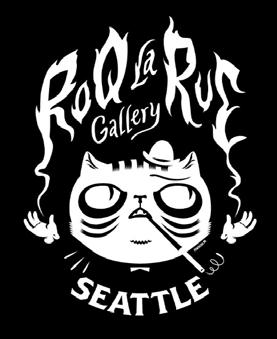
My first question: How the fuck have you kept an art gallery open for 25 years in Seattle? When I started, the internet started happening. I started in ‘98, I immediately was online, and I was also at the front of this emerging wave of art that was starting to become popular through magazines like Juxtapose. So I was able to do really targeted marketing and be online. It was accessible to anybody. That’s how I got a collector base that spanned the globe, honestly. And early on, I could get places with really cheap rents. Some building owned by a dude who was like, “Don’t bother me about maintenance and you can have cheap rent.” It worked out great for a while. [Laughs]
At the time, when you were starting out, not knowing what you were doing and having buildings literally crumbling above you, why was it important to you to still keep going?
I grew up surrounded by arts, my parents were artists, and it was understood that I was gonna be an artist. I was a painter—I wasn’t very good. I was extremely judgemental and I had very high standards, and I applied them to myself as well. But growing up being surrounded by fine art, then also growing up during punk rock and new wave and loving counterculture stuff, I just glommed on to that. This new art movement I was seeing, which was called lowbrow at the time, was this blend of all of that. It was very exciting, and I wanted it to be here [in Seattle].
I was working at Seattle Art Supply and hating my job, as you do, and someone asked, “What would you do if money was no object?” I said, “Open a gallery.” It just popped out of my mouth. I hadn’t thought about it. The next day I read an article in the Seattle Weekly about Larry Reid, about how he started. Reid was an early mentor of mine, and he was like, “I just painted the walls white, put lights up, and called some artists.” Well, I can do that. So that’s how I started.
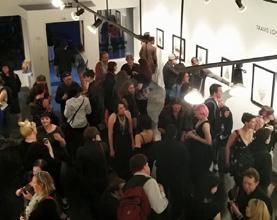
vage were doing cartoony figurative works, and I was like, “I want people to know that the lowbrow pop surrealism scene was doing this first because they’re gonna get
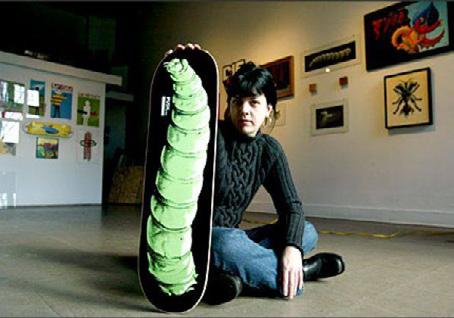
like the palatable version, but yes. I’m from Seattle, I went to Easy Street in the early ‘90s, so I watched Sub Pop and what they were doing, and when I opened the gallery I very much was looking at Sub Pop. I knew I had to build the gallery name as well—T-shirts, stickers, and things like that. And purposefully, in my advertising, highlighting the gallery name, too, much in the way Sub Pop did.
There was a point when Roq La Rue closed briefly. What happened there?

sort of immediately changed my life. I was like, “I can’t go back to minimum wage.”
[ Laughs ] Even though I’m still making minimum wage, I work for myself. I’m doing something cool.
Was there a point in all of that where you thought, “Okay, this isn’t a little punk rock dive—this is more than a counterculture, lowbrow hole in the wall”?
That’s a great question. No one’s ever asked me that. Yes, there definitely was a shift. This art started to become really popular,
“The story of Roq La Rue is one of tremendous luck.”
and there were a bunch of galleries starting to crop up around the country. At the time, I was hyper-competitive, I think in a good way. I became extremely competitive, as did everyone else. And I think that brought the level of things up, I think it was a healthy competition.
The other thing that happened is that some of the artists started to become really popular, specifically Mark Ryden—he’s the one who’s moved on to the blue-chip art world. And so suddenly, money got introduced. We all had to adapt very quickly to becoming more professional and realize this is actually a legit art movement. I was seeing ripples in the New York art world, people like John Currin and Lisa Yuska -
shafted.” [ Laughs ] So I wrote the book Pop Surrealism and Juxtapose started to become really huge, which was the journal for this art movement. I think that’s when everyone sort of woke up and we all became really serious.
Originally it was like tikis and hot rods and lowbrow…
Flames on everything!
Yeah! And kitsch. Kitsch was really valued. I loved it because it was a working-class art movement. Then, because there were no rules and because it was distributed so much because of the advent of the internet, other artists started to go, “Wait, I can do that? I can paint whatever I want? I can get weird?” So a lot of people out of the illustration world moved in, like Mark Ryden or Todd Schorr—it wasn’t just the celebration of this counterculture, it started to have a different meaning, it started to become more beautiful, more symbolic, and that’s what started pulling money in. I would say 2004, 2005 is when the shift really started to happen.
It sounds so much like Seattle’s music industry in a lot of ways. Grunge started as Green River, TAD, the Melvins. During the grunge boom, they ended up getting shafted–if you use money and fame to measure success–compared to Pearl Jam and Nirvana. The earlier bands introduced the idea that you can break the rules or that there were no rules in the first place… And then it becomes more palatable, and more people like the palatable version. I also
Yeah, I lost my cheap awesome space in Belltown. But weirdly, the story of Roq La Rue is one of tremendous luck. It’s very weird. Things fall into place when they need to. I was like, “That’s the end of the world. I lost my space. That’s it for me. There’s no way, I can’t afford something else.” The next day I found a place on Craigslist in Pioneer Square in this beautiful gallery space. The Pioneer Square days were part of our heyday in that the movement was so vital, and I had all the energy in the world, it was just a whirlwind. It was great, but I also burnt out really, really hard. That’s why I closed in 2016. I also became involved in wildlife conservation and started doing nonprofit stuff and taking people on safaris in Africa. It wasn’t gonna pay my bills, so I needed to do something, and I thought I’d open a store and it just very quickly transitioned into having the gallery again. Also, people wanted it. I had a break. I kind of missed it. I felt Roq La Rue was this entity that was me, but it was also collectors and artists and it almost became a weird beast of its own.
I realized that just abandoning it was not smart. The gallery changed my life, I became a completely different person. I was an airy fairy floating around and doing jobs that were not meaningful to me, and through the gallery I had a sense of purpose. When I quit I knew I was going to lose that, but I didn’t know how much it would affect me to lose that.
I opened in Capitol Hill, thinking that was going to be great. And it was awful. Capitol Hill was going through a rough patch. I was there for COVID and CHOP. CHOP didn’t impact us as much, but I didn’t get any walk-in traffic. While walking around I found this space [in Madison Valley]. I pay a lot more rent, but the space is beautiful and it’s very fitting with what I do now. I get more walk-in traffic here than in any of my other spaces.
Tell me more about the 25th Anniversary show in October. There’s a lot of ground to cover!
It will feature more artists I’ve worked with over the years, some very recently, some much older who I haven’t shown in years. It’s a hodgepodge. I’m having people like Mark Ryden, Marion Peck, Esao Andrews. There’s no theme, it’s completely open, whatever people are inspired to do. It’s really a celebration.
What’s next? Another 25 years? I’m probably doing this until I die. ■

BY MEGAN BURBANK


Freographer Nia-Amina Minor, art-making is all about the invitation: a gesture; an opening that blooms outward from its center; bringing in voices from the past and present; from the audience members seeing all kinds of dance vocabulary unfold onstage to the dancer on the Marley in a master class, breathing in and out.
That’s the motivating impulse of To Gather, two weekends of dance and performance at On the Boards this October. Curated by Minor and fellow dance artist David Rue, the program brings together big-name out-of-town performers and highlights Seattle’s own deep bench of performers, all while drawing on a rich dance history, a long-running collaboration, a commitment to centering Black and brown performers past and present, and an ongoing inquiry into what it means to share space and make art in community. “It does sort of blossom out in this way,” said Minor. “It’s much more than it is about the two of us. It is really about this invitation.”
One of those invitations went out to Maurya Kerr, whose dance company Tiny Pistol is based in the Bay Area, but who has her own ties to Seattle: She was trained at Pacific Northwest Ballet. “She’s a dancer that I’ve admired and revered for a very long time from afar and have built a relationship with,” said Rue, who was particularly drawn to the way Kerr interrogates Eurocentric norms in classical ballet—a big deal in an art form deeply rooted in white supremacy, rigid gender roles, and a culture that often normaliz-

work centers Black voices, said Rue, “in a way that is resistant and also very vocal.”
To Gather will also bring in Bernard Brown, who founded the LA-based dance company bbmoves in 2014 through a lens of social justice, and with whom Rue shares Minneapolis dance roots. Brown and Kerr will “be paired with local Seattle-based artists on the same bill,” said Rue, “and I think that that really comes back to this idea that we all have the potential to be connected and sometimes it takes the invitation to make that gathering practice happen. And I’m just really excited to see what will come of the process.”
Most arts communities draw on personal relationships, but To Gather incorporates these ties intentionally into an iterative, ongoing process of collaboration. The foundation of it all is the robust friendship and collaboration between Minor and Rue themselves, initially sparked when Rue was commissioning artists to bring dance into Seattle Art Museum’s gallery spaces. At SAM, he invited Minor, then a company member with Spectrum Dance Theater, to perform a solo for the exhibition Figuring History: Robert Colescott, Kerry James Marshall, Mickalene Thomas , featuring work challenging the unbearable whiteness of canonical Western European art history.
“I was like, ‘Nia, I trust the beauty that you bring into the space,’” recalled Rue. “And there’s an image in my mind that I will never forget: It’s in front of a painting called ‘School of Beauty, School of Culture.’”

This was the site of Minor’s solo: a paint ing by Marshall depicting a beauty school filled with signifiers of Black culture and community, from an autographed Lauryn Hill album cover on the wall to the distorted head of a Disney-like white woman, a sendup of racist beauty standards and a deep-cut art historical reference to Hans Holbein. “It’s to this day one of my favorite things that I’ve ever done and look at what it’s led to,” said Rue. “Here we are.”
That first collaboration led to more: During the pandemic, Rue, Minor, marco farroni, and Akoiya Harris started having conversations about how they could build on their personal and creative connections. “How do we work collaboratively?” said Minor. “How do we bring our voices together and share in authorship of what we’re doing? And Black Collectivity came out of that.”
Black Collectivity, a project from Rue, Minor, farroni, and Harris, resulted in A Practice of Return, “a celebratory archival practice” offered as part of Velocity Dance Center’s 2023 Made in Seattle festival. The project combined workshops, performance, and film in a look back at the lineage of Black dance artists in Seattle, finding a catalyst and forebear in dancer and choreographer Syvilla Fort. A student at Cornish College of the Arts in the 1930s, Fort was a contemporary of Merce Cunningham and John Cage, and her work served as inspiration for two weekends of performance—“a response from us as contemporary artists to this history,” as Minor put it.
A Practice of Return was a deep, ambitious project, one that required “about 18
months of research and planning,” said Mi nor, out of which “came continuous conversations between the four of us... how can we continue this practice, and how do we also provide opportunities for us to develop and grow as artists?”
To Gather was one answer, and Minor hopes it won’t be a stand-alone event but an ongoing inquiry into the ideas she and Rue first discussed as they developed the vision of Black Collectivity, one with the capacity to inspire even more artists, and even more creations rooted in community. “The idea that we had was this vision of gathering,” said Minor. “What does it look like to invite audiences and artists to gather together and to move into a relation that is in the spirit of gathering?”
Minor and Rue don’t know what collaboration or further inquiry To Gather may spark, just that, if their previous projects are any indication, it will, making space in the process for new work, and for Black and brown creators and performers to thrive alongside one other. “A mantra that we had during our first process was: We have this one star that’s amongst a constellation,” said Rue. “So how do we all shine within those stories? Which I think now is leading into To Gather… we’re thinking about how can we bring individual voices all together to sing one collective song? So we’re trying to really, conceptually have Black and brown artists twinkle in the cosmos.”
See To Gather at On the Boards Thursday-Saturday October 5-7 and 19-21. Tickets are available at ontheboards.org. ■

BY MEGAN SELING

Iwas thirty seconds into my Zoom call with Emmett Montgomery and Derek Sheen and shit was already going off the rails. Instead of talking about Friendship Dungeon, the duo’s new monthly midnight variety show, the three of us started the interview by scooping up our dogs from their respective napping positions only to spend several minutes urging the animals to acknowledge one another through the computer screens.
Montgomery’s little Italian Greyhound mix Carmen Dracula, Sheen’s toy poodle Shadow, and my beagle Johnny Waffles
squirmed and pulled away as if we were trying to squeeze them into baby clothes and pose them in a basket of vegetables for an Anne Geddes calendar.
I attempted to rein in the circus. “Okay, we should probably get started. You’ve said before that Friendship Dungeon is all about getting weird—I want to talk about how you guys are bringing the weird back to Seattle.”
Montgomery and Sheen balked. They immediately rejected the notion that they were somehow leading the charge into unexplored territory.
“Seattle has always been weird,” said
Montgomery. “The problem is, since even before the pandemic, with our creative real estate problem and papers going away and losing arts advocacy, that weirdness has been harder to find. Going back to Faux Bang and Dina Martina and Coffee Messiah and Sylvia O’Stayformore—[there’s always been] a general weirdness. What we’re trying to do is not be weird again, but make the weirdness more accessible.”
“Back in the ‘90s there was a slew of variety shows that were elevating a lot of the non-stand-up, non-straight music acts,” added Sheen. “[Seattle] is kind of the home
of horror drag, horror drag started here— Ursula Android, Jackie Hell. And not just drag, not just stand-up, not just music—but lots of stuff in-between.”
They’re not wrong; weird is in our water. Montgomery pointed out that one of the country’s most confounding yet most popular television shows, Twin Peaks, came from the Northwest. Sheen added that generations of Seattleites grew up watching The J.P. Patches Show, a regional children’s program that ran from the late ‘50s to the early ‘80s and “took place in a junkyard with a creepy clown and his partner who was a drag per-
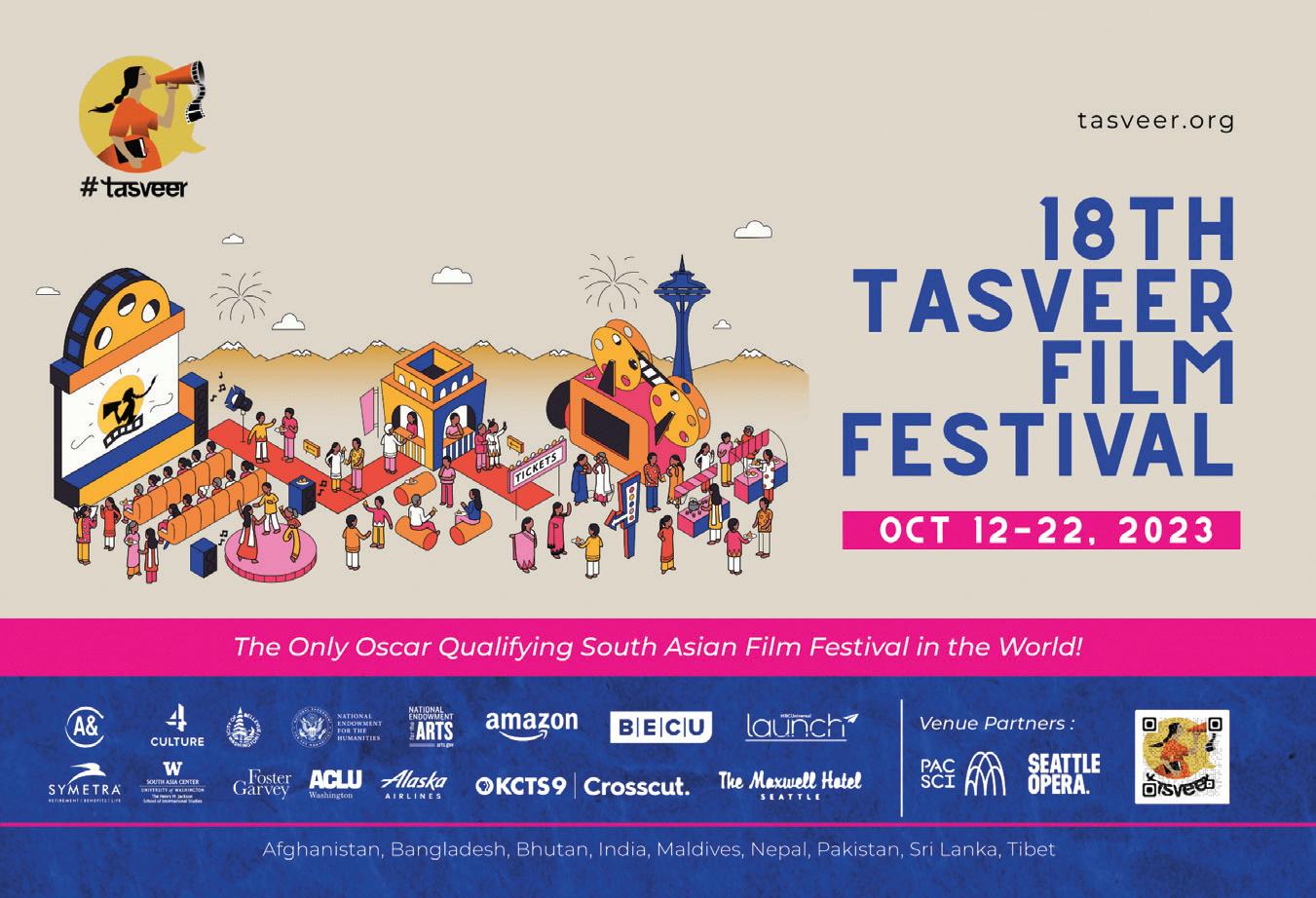

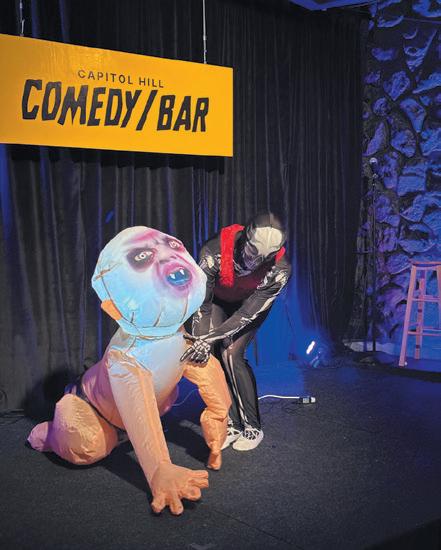
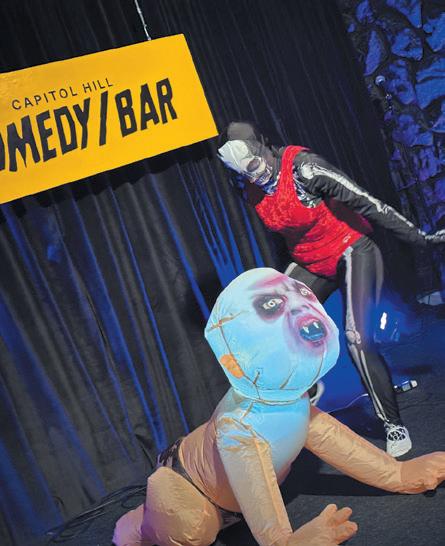
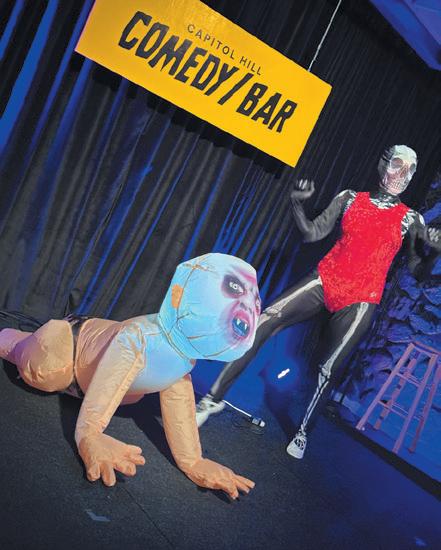
former. Nothing is more Seattle than that.”
Montgomery and Sheen have been being weird in Emerald City for decades, too. For much of the 2010s, Montgomery hosted the Weird & Awesome variety show at Annex Theatre, and the two comedians were mainstays of Seattle’s nightlife and arts culture when experimental comics and performers including Reggie Watts, Jackie Hell, and Ursula Android, were taking risks and finding their footing.
“I’ve been able to successfully book strange variety shows for two decades, and
a lot of times what’s exciting is it comes from… I think we all have weirdness inside of us, and jokes and stories. All of us have that in us. We’re not reinventing the wheel, we’re just continuing the tradition.”
Friendship Dungeon’s inaugural show was in August and, yeah, it got weird. But it was more than that, Montgomery and Sheen say. The show’s loose, late-night format created space not just for weirdness but for vulnerable experimentation and intentional creative expression.
Montgomery brought large handmade
puppets. Erin Popelka did a dance to “(I’ve Had) The Time of My Life” in a sparkly leotard and a skeleton body suit with an inflatable monster baby and plastic skeletons from Target. Hampton Yount, aka the voice of Crow on Mystery Science Theater 3000 , headlined Comedy/Bar that night and stuck around afterward to do “a set that he wouldn’t have done during his main show,” said Montgomery.
“Including a really hilarious but extremely dark bit. When his father had a stroke, his father called Hampton and got his outgoing

voicemail, which was extremely silly and stupid. So he played that to us, but we had the context of, like, a man trying to reach his son, and then the guilt from that.
“There’s a sweet, weird dimension that happens with late-night shows,” Montgomery continued. “What I love about these latenight shows that Derek and I get to do all over the country is, you know, there’s a freedom, but there’s also a skill, a focused chaos. … It’s in that place of intentional idiocy that you can get some really brilliant stuff.”
“We want to avoid that label of just drunken crazy late-night party atmosphere,” added Sheen. “We want to make this an hour or hour-and-a-half for people who are up late and want their minds to be expanded a little bit by something outside of the normal realm of what you would expect to see at a comedy club.”
“Because it’s still art, right?” I asked. “There’s preparation, there’s effort, there’s intentionality. It’s not just a free-for-all, or just, you know, like, a fart fest.”
“No! Yes, there will be a fart fest!” said Montgomery.
“Fart Fest is our Sunday show,” added Sheen.
We laughed, we talked about Fart Fest being a fictional band who makes beautiful music, we laughed some more, and then Sheen got serious. “You literally just tapped into one of my biggest influences, Le Pétomane, from France, the fartiste from the late-19th century. He did an actual fart presentation at the Moulin Rouge…”
Montgomery sensed the skepticism in my laughter. “Do you know about Le Pétomane, Megan?”
“No! I just assumed he was bullshitting!”
“No, it’s real,” Sheen said, “There’s a recorded performance of him somewhere.”
“He could blow out candles and stuff!”
“Of course, he did shit his pants onstage one time,” added Sheen. “He was just like, ‘Sorry I’m clearing my throat,’ and then went on with the performance. … Okay, that part is bullshit.”
And we were back off the rails.
See Friendship Dungeon at Comedy/Bar at midnight on the last Saturday of every month. ■







BY RICH SMITH
Any record made in Seattle by people who live in Seattle will sound like Seattle in some way, but the city literally makes the first sound on Death Cab for Cutie’s 2003 breakout record, Transatlanticism
Just before the guitar feedback meanders in on the opening track, “The New Year,” a high C from a Hammond organ hangs in the air as the distant whoosh of cars driving down a highway washes over it. Those same sounds run under the full length of the album’s closer, “A Lack of Color.”
According to frontman Ben Gibbard, in those moments we’re hearing a field recording of the city captured in stereo at 3 am from his old attic apartment bedroom on
Mercer Street between Bellevue and Summit Avenue. During the summers especially, west Capitol Hill’s noise floor comforted him as he tried to find sleep or the words for the songs that would become the album that transformed the band from a scrappy touring outfit to a full-blown Big Deal. Gibbard and producer/guitar player
Chris Walla liked the neighborhood’s auditory atmosphere so much they decided to bookend the record with it. In a recent interview with The Stranger , Walla said the sonic ouroboros amounted to “a little drama, a little theater” that pulls the listener into Transatlanticism’s world.
The move also embodies some of the record’s major thematic tensions: Longing and
its “endless distances,” as the West Coast poet Robert Hass would have it, and the paradise/prison of permanence we find in the notions of home and romantic relationships.
“Because of that [field recording] and other reasons, this record is very much rooted in Seattle, in the pulse of Seattle, the feeling of the city being both this living, breathing organism but also this very lonely place,” Gibbard said.
That record, along with Postal Service’s Give Up, turns 20 years old this year. To celebrate, Death Cab released a forest green commemorative vinyl of Transatlanticism, and the bands launched a double-bill fall tour that makes its way to Climate Pledge Arena on October 6 and 7. Last month, I spoke with
Gibbard, Walla, and bass player Nick Harmer about making the record, about how the region we all share helped to shape it, and why most of them still stick around.
The Strong Scent of Evergreen
Many musics make up Seattle and the Pacific Northwest, but in the early 2000s much of the world still saw the region through the grubby lens of grunge. From my vantage as a midwestern high schooler who knew little of life and less of Seattle, though, grunge music emerged from the television—not from any place where people lived.
As I transitioned from a pop-punk phase into an indie rock phase, the bands on Barsuk and K Records ended up coloring the




PNW for me more than grunge ever did. And no album painted that picture more vividly than Transatlanticism
On that record, the PNW wasn’t grimy and swaddled in a flannel. It was “the strong scent of evergreen / from the passenger seat.” It was a “sugary springtime.” It was “braving mountain passes” for college girlfriends. It was the reverb on the vocals and guitars evoking the image of mountains rising up in the middle-distance such that even the California sun “cascaded” down faces. (A stretch, sure, but you gotta admit it’s sitting right there.) It was a place that changed but always stayed the same, sort of like my love for her; whoever she was, wherever she was.
All of that sounded downright intoxicating coming from small-town Missouri, where everything variously smelled like grass and dust, and where nothing changed but nevertheless kept getting worse.
When I finally did brave those mountain passes for the first time as a grad student in 2011, Seattle looked the way Death Cab made it sound: a habitable diamond in the rough. Though I gather it wasn’t the Seattle of 2003 by any stretch, the natural beauty (and peril) was all there, as was that pervasive sense of loneliness.
As it turns out, all of this placemaking on the record wasn’t merely incidental. Gibbard, who grew up “dancing in the Olympics” with his parents, said his early study of the Beat Generation writers—particularly Jack Kerouac—gave him the impression that good writing gave readers a “strong sense of place.”
All of that sounded downright intoxicating coming from small-town Missouri, where everything variously smelled like grass and dust, and where nothing changed but nevertheless kept getting worse.
That lesson helped lead him, for example, to the decision to swap a verse about a new boyfriend serenading the narrator’s girlfriend on “We Looked Like Giants” for a verse about the narrator holding his girlfriend closer as mountain air passes through a window. Though he wrote the demo while housesitting for Bay Area rocker John Vanderslice in San Francisco, upon his return to Seattle he realized that a “real sense of place” helped tie the song together, and so he made the switch. Sometimes you gotta go away for a bit to remember home.
For Walla, the field recordings, the nocturnal “Twin Peaksy” atmospherics of a song like “Passenger Seat,” and the environmental metaphors Gibbard wove into the lyrics contributed to the overall cinematic quality of the album, reinforcing its narrative arcs.
Though they all expressed admiration for some grunge bands (Gibbard praised Nirvana, Soundgarden, Coffin Break, and Hammerbox) and argued that grunge represented a real and true facet of Seattle from that time, the sound the band found on Transatlanticism flowed forth from other streams.
As opposed to the guttural machismo of a vocalist like Pearl Jam’s Eddie Vedder, Gibbard discovered a kind of permission in the higher, simpler, more tonal voice of Sunny Day Real Estate’s Jeremy Enigk (who he first saw opening for another band in Seattle) and Built to Spill’s Doug Martsch.
Gibbard’s own PNW touchstones were Treepeople from Boise, Idaho and Hazel from Portland, Oregon, but for him, no band emulated or embodied “being a band from the Northwest” more than early Modest Mouse on The Lonesome Crowded West and This Is a Long Drive for Someone with Nothing to Think About
“Those albums are so wonderful for many reasons, but one of the things I really gravitated towards was this very real sense of isolation and loneliness, and also the encroachment of gentrification and the suburbs creeping further and further out from Seattle; eating Bellevue, eating Issaquah, eating Snoqualmie. These things have happened and they continue to happen,” he said.
Though it didn’t influence the sound of their music as much, the spotlight grunge put on Seattle in the 1990s spurred Death Cab’s members to take music-making seriously. Learning that Seaweed—a grunge band from Tacoma, “not even Seattle!!”—landed a deal
with Sub Pop gave Gibbard “a path of possibility that was open and awesome.”
Before college, Gibbard took the ferry from Bremerton to catch concerts at the Central Saloon and the OK Hotel. Harmer caught rides up from Puyallup, and he remembers skipping school on occasion to dig through 7” records at Cellophane Square in the U-District, sourcing his music from Green River College’s KGRG radio station. Walla credited Seattle’s “amazing radio landscape” in general for feeding him all the music he couple possibly devour, expanding his tastes beyond the stuff that was getting popular.
Though the band originally formed north of Seattle, in Bellingham, the lineup that created Transatlanticism mostly hunkered down in Seattle from December of 2002 to the summer of 2003. During that time, they say they kept their distance from “the scene” at Linda’s and the Cha Cha Lounge. They sometimes hung out at Eileen’s. Gibbard ate most of his meals at the Pho Than Brothers on Broadway and walked around Capitol Hill most days, listening to demos on headphones and trying to write lyrics. Harmer picked up shifts at Sonic Boom Records, which had recently opened. Walla, who ran the Hall of Justice recording studio in Fremont where they tracked and mixed most of the record, was a PCC guy. “About every day I’d get a sandwich and something from the deli case, and that’s it… along with the occasional Taco Time run,” he said.
Their relative distance from the scene helped them focus, but Gibbard, Walla, and Harmer credit two things for the artistic success of the record: good vibes and drummer


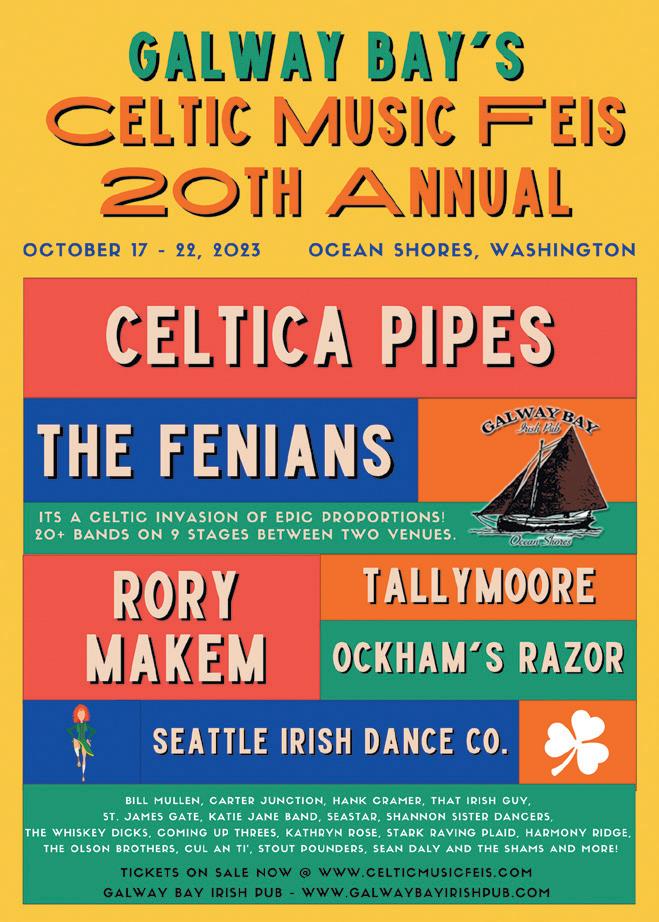

Jason McGerr. They picked up McGerr and started rehearsing with him following a big blow-up on tour one night in Baltimore, after which the band parted ways with drummer Michael Schorr. McGerr’s gravity grounded the band, and his openness and vision shaped a lot of good ideas on Transatlanticism.
Personnel change aside, everyone in the band also felt relatively relaxed for what felt like the first time in a while. Royalties and odd jobs gave members enough money to eat soup and buy records, and they had more time to play with than they had when they recorded their previous record, The Photo Album
Moreover, Walla’s powers as a producer had reached new heights. At that moment in 2003, Gibbard said Walla had learned how to “play the studio like an instrument.” Gibbard was on a hot streak himself, writing a bunch of songs that would become Give Up while also knocking out tracks for Transatlanticism
When the album finally came out, it’d go gold and garner plenty of critical success, thanks partly to a few mentions in the hit television show, The O.C., the Millennial version of Beverly Hills, 90210
Though the success of that record took them around the world, everyone but Walla, who now lives in Norway with his partner, still lives around here.
Both Gibbard and Harmer still find a sense of freedom in the proximity to the wilderness and the waters, and though Harmer acknowledges some cultural shifts within the
city, he still sees Seattle as “its own little dive bar up in the corner of the country.”
“I don’t know if it’s an ethic or a philosophy,” he added, “but compared to New York or LA we’re just not as pretentious and not showy—people still roll their eyes at displays of wealth just across the board.”
That ethos recalled a lesson about Seattle that Gibbard actually did take from all those grunge acts in the 1990s: “You can’t go out into the world, gain success and notoriety and fame, and then come back to Seattle and be a dick,” he said. Being in Death Cab, he argued, confers no special access to restaurants, events, or anything else. “The city helps you keep it real.”
Setting aside the housing crisis, the new smoke season, and all the bullshit coming out of City Hall, when I can find a minute to breathe, it still feels like a personal achievement as an organism to call Seattle home.
Looked Like Giants”? Yeah, it does and I do. Setting aside the housing crisis, the new smoke season, and all the bullshit coming out of City Hall, when I can find a minute to breathe, it still feels like a personal achievement as an organism to call Seattle home. Its sun and spray and sweet springs still more than make up for its darknesses and its particular lonelinesses, all of which Death Cab & Co. capture directly and indirectly on the album.
they were younger, when the bonds with music formed much more strongly. That idea makes sense to me, and it tracks with the dominant marketing strategy of trying to sell Millennials experiences instead of goods as the country shifted from manufacturing to a service-based economy over the course of the last several decades.
Harmer rejects my cynic’s premise and asks for whom is this tour nostalgic? Music is a living thing. People are still being born who are hungry to discover music they haven’t listened to yet, and these tours help expose them to songs that will be with them for a lifetime.
“The only person who doesn’t have to pay for a meal in Seattle is Marshawn Lynch,” Harmer added.
The tour for Transatlanticism and Give Up gives the band another chance to test their thesis about Seattle, and it offers me an opportunity to do the same. Does the city still wow me now like it did before I knew it? Do I still feel as if I’m driving through the lonely and verdant corridors of the Mountain Loop Highway when I listen to “Passenger Seat,” or “Transatlanticism,” or “We

After blissing out on that idea for a while, the cynic in me starts whispering questions about the degree to which the band is just cashing in on my Millennial nostalgia trips the way the Rolling Stones and Bob Dylan tours cash in on Boomer nostalgia, perpetuating a tendency in the industry to repackage old stuff rather than invest in new talent.
In response to those provocations, the band offers many strong arguments. Gibbard sees the rise of playing-the-wholealbum shows corresponding with the rise in streaming music. These sorts of tours, he speculates, see success because they return to listeners a physical connection with the music they loved when
The sentiment rings true for Seattle and the PNW more generally. To some degree, yes, these exact mountains and these exact record stores and this exact studio and the sound of those particular cars rumbling over that particular highway at that time in everyone’s life all helped shape, to varying degrees, a great rock record. Without preserving that universe in amber, it’s hard to see how any band could keep bottling their version of the light and loneliness around these parts.
But so long as the Cascades and the Olympics still rise an hour outside of town, so long as music venues, studios, bars, and restaurants exist—even if they are located in different buildings!—then there will continue to be a city and scene for musicians to conquer or buck.
See Death Cab for Cutie and The Postal Service perform Transatlanticism and Give Up at Climate Pledge Arena Pledge Arena Friday and Saturday, October 6 and 7. ■

SEPTEMBER 21 & 23 Raise the Curtain
OCTOBER 5, 7 & 8 Stravinsky The Firebird
OCTOBER 13 & 14 Mahani Teave’s Playlist
OCTOBER 17 John Malkovich In the Music Critic
OCTOBER 26, 27 & 29
NOVEMBER
NOVEMBER 30, DECEMBER 2 & 3
DECEMBER


DECEMBER


But It’ll Still Be Seattle’s Wildest Fall Music Festival
BY DAVE SEGAL
The 10th annual Freakout Festival in 2022 was supposed to be The Big One. Event founders Skyler Locatelli and Guy Keltner and their team of seasoned organizers had booked Latin American psych-/ garage-rock legends Os Mutantes, Los Dug Dug’s, and Los Saicos’ César “Papi” Castrillón. The performers—many coming in from other states and countries—numbered 150, the most in FF’s history. There were more venues than ever, including a free outdoor stage. The social-media hype and press coverage were present and cor-
“It’s like if King Khan and the Spits had a flamenco baby.”
rect. Coming off its best attendance and financial year ever in 2021, Freakout had momentum on its side.
But the 10th-anniversary of Seattle’s premier psyche-decadent extravaganza underperformed, at least from an accountant’s
standpoint. Attendance was lower than expected. Money was lost. Doubts festered. The COVID grant funds had run out. Freakout Fest—as exciting and aesthetically successful as it was—couldn’t go on like this.
So, after a late 2022 meeting with King County Creative Economy Director Kate Becker, who proposed that Freakout transition to nonprofit status, Locatelli broached the idea to his business partner. They agreed that it made sense. “We feel like we’ve already operated as [a nonprofit] from an organizational mission standpoint,” Locatelli said in a phone interview.
“We were still a business with two owners who ultimately have executive decision-making, but we’ve always thrived on being a community-led thing.”
Now with a board of directors added to the company and access to grants, Freakout has been able to operate without chronically worrying about keeping it in the black. “I wouldn’t say that the primary reason is financial, but it kind of is,” Locatelli said. “There are a lot of costs saved and costs gained by operating a nonprofit business. We have a fantastic board that we’ve put together. We have more eyes and ears in





the room now. There are tax benefits, of course. We’re able to let go of the stress of operating an LLC a bit.”
Freakout’s board members predominantly consist of mainstays in Seattle’s entertainment scene: Alaia D’Alessandro from the great rock band Tres Leches and KEXP; Christine Gutiérrez (aka popular DJ Gold Chisme), Chris Porter (ex-Bumbershoot, Hardly Strictly Bluegrass), Keep Music Live board member Sarah Rathbone; Leigh Bezezekoff (Tractor Tavern marketing and ticketing director); Kay Van Petten (former Caffe Vita marketing director now doing marketing for Sonic Guild); and Crocodile talent buyer Morgan Clinton. In addition, the Vera Project fiscally sponsors Freakout.
Keltner thinks that the change has been beneficial so far, but cautions that it could make things harder, “because maybe [agents and artists] get the impression
“We have a fantastic board that we’ve put together. We have more eyes and ears in the room now.”
that there’s public money involved now, so they’ll go after more.” With a laugh, he added, “It could backfire.”
Generally speaking, though, becoming a nonprofit has increased Freakout’s name recognition. Which is necessary, Keltner said, because his biggest annual challenge “is getting on the phone with agents or artists and convincing them why it’s important they play [Freakout].”
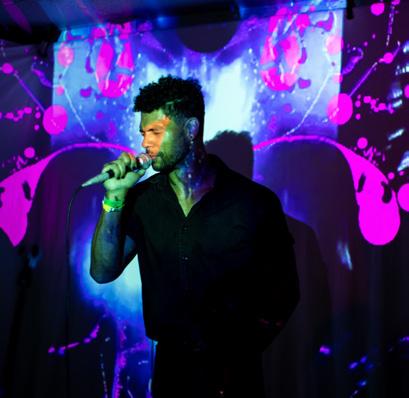
Trying to figure out why 2022 attendance plummeted, Locatelli consulted with Adam Zacks of THING and Kevin Sur of Timber! They concluded, “There was this mad dash of events in 2022 [to make up for time lost to lockdown], and people got fatigued.” He also speculated that the headlining Latin rock legends may have not been as powerful a draw as expected, though their individual sets lured big crowds. But advanced sales for this year’s Freakout are substantially ahead of where they were last year. More recognizable headliners such as the Gories, Allah-Lahs,


the Spits, and Sextile may have had something to do with that.
Some other changes are afoot. To hold down costs, Freakout has striven to limit the number of artists to 75—roughly half of 2022’s total. However, they’ve blown through that goal; it was around 105 at the time of our interview. “There are a few slots left,” Locatelli said. “I’m considering doing a collaboration with the MoPOP Sound Off! artists again; we did that last year. It’s tough. There are so many great bands and we try to make space for as many as possible. But at the same time, more bands is more money
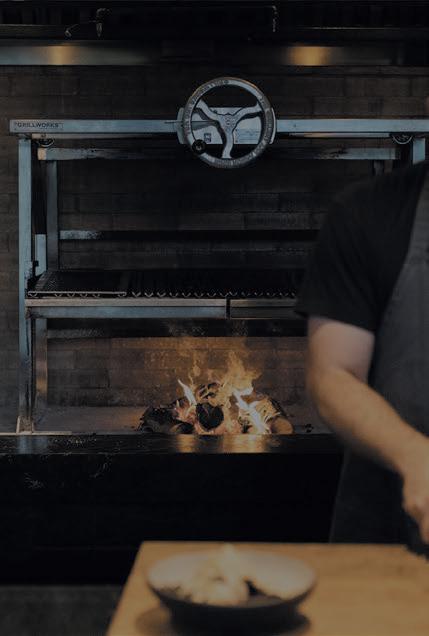

and more coordinating to do. But I hope we max out at 115 this year.”
Because Keltner starts booking Freakout over a year in advance, he’d landed many acts before the switch to nonprofit status occurred. (This will be the last edition where he carries so much of the curatorial load.) “The only thing this year that’s been really affected by the nonprofit side is we’re smarter about the budget, thanks to having other people in the room to talk to,” Keltner says. Other tweaks include the removal of the outdoor stage and scaling back from four nights to two at Tractor Tavern. The Spits

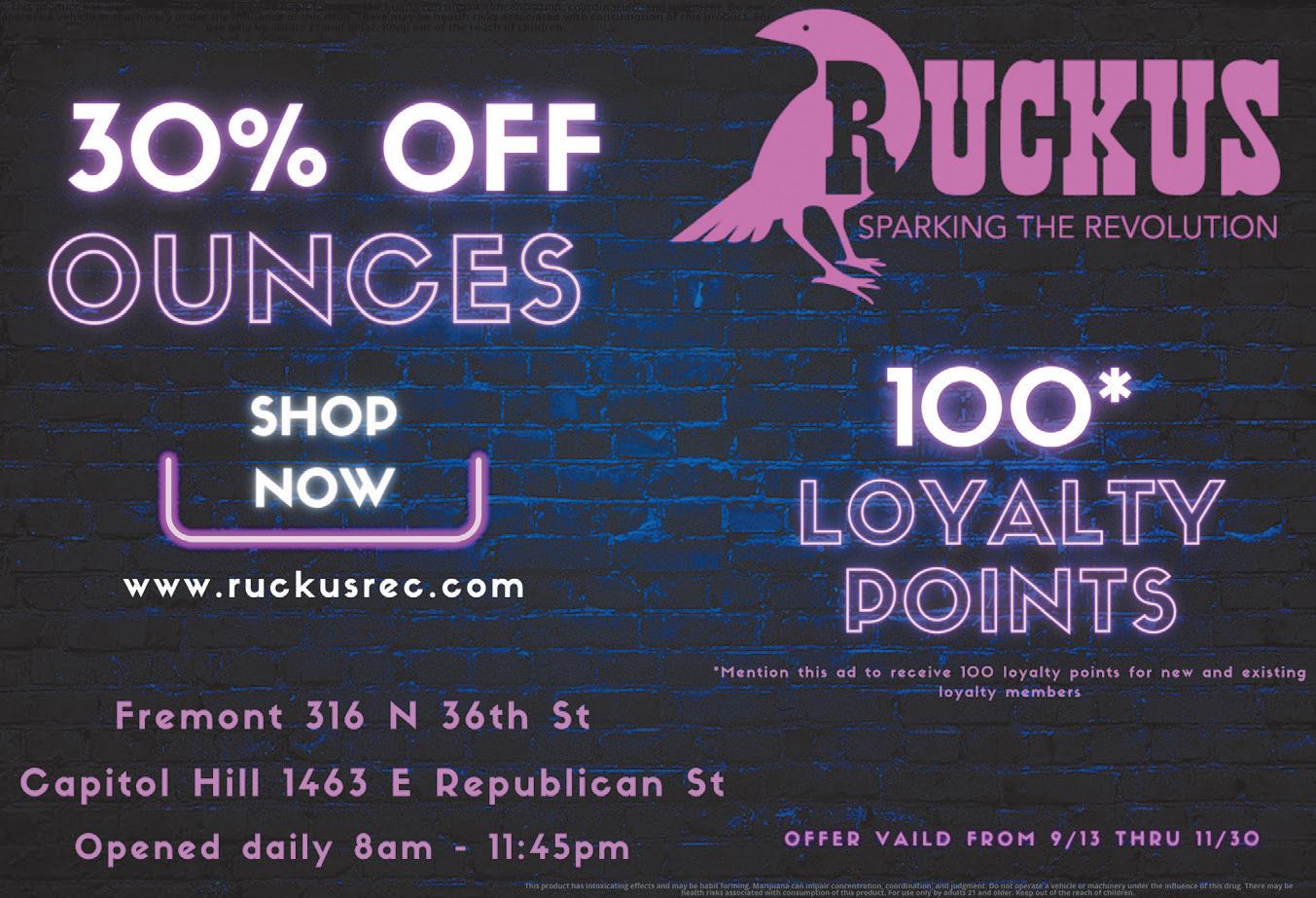

Youngblood

will headline one night and Sextile the other. While losing the defunct Hotel Albatross hurt Freakout, they plan to work with the Ballard Smoke Shop in an open-to-the-public scenario and hope to secure free stages at femme-centric sports bar Rough & Tumble and possibly another space. Free stages will continue at Filson and Caffe Umbria.
Beyond that, Keltner and the board are taking steps to make the DJ program more diverse. “It’s programming that can be really fun when it works,” he says. “But a lot of times I fuck up and don’t give it a lot of care, because I’m doing too much. Now I’m
getting some help with that. It just enriches the whole experience when you’re nailing those things. You want people to be walking into every room on Ballard Avenue and
“I want people to be walking into every room on Ballard Avenue and going, ‘Wow, that’s a vibe!’”

go, ‘Wow, that’s a vibe!’ I think that general vibe’s gonna be richer this year because of the board.”
Perhaps the biggest development has been hiring local photographer Jim Bennett as festival director. A former Microsoft employee, Bennett has worked with Pearl Jam, among other bands, and is lead photographer for Seattle Theatre Group and KEXP. Freakout’s paid staff predominantly has been male, and Locatelli admits they want to have better representation as a nonprofit, but the organization needed a director stat, and Bennett was eminently qualified and enthusiastic. “He’s been great,” Locatelli says. “He’s taken a lot off my plate.” Locatelli also praises Freakout’s production director Ross Albrechtson, production manager Cameron Lavi-Jones, artist-relationship coordinator D’Alessandro, marketing director Jake Hanson, and Aubrie Kralis, who handles social media and digital marketing.
As for the 2023 lineup, there’s much to get stoked about. Locatelli is especially psyched about the Gories, who’ve been on Freakout’s wish list for years. Luckily, the revered Detroit garage-rock group share agents with fellow headliners Allah-Las, so it finally worked out. Skyler and Guy are also pumped about the cumbia-punk outfit Son Rompe Pera, who will be the fest’s closing headliner. Both men also tout the crazy one-man band Nestter Donuts, whom

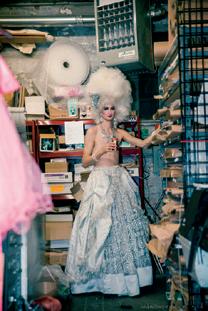




Keltner met while in Alicante, Spain.
“He calls his music ‘flamenco trash,’” Keltner says. “It’s like if King Khan and the Spits had a flamenco baby. I’m gonna have him play three times, and I’m putting him in different rooms each time. I did that last year with this band from France called the Wave Chargers, and by the end of the festival, when they opened on the main stage, they had a full house. It works to build buzz around a band. But [Nestter Donuts] is the artist where no one has any idea what they’re in for.”
Freakout Festival 11 is Thursday-Sunday, November 2-5, at various venues in Ballard including Tractor Tavern, Salmon Bay Eagles Club, Sunset Tavern, and Conor Byrne. Visit the-freakout.com for full schedule and tickets. ■






Cross the water October 1–7 to celebrate creativity and community on Bainbridge Island.
Each day of the week is a unique experiential immersion into creativity. Bloedel Reserve Members get access to selected ticketed events.
12 Creative Residents, 6 Days, 5 Creative Categories, and YOU.


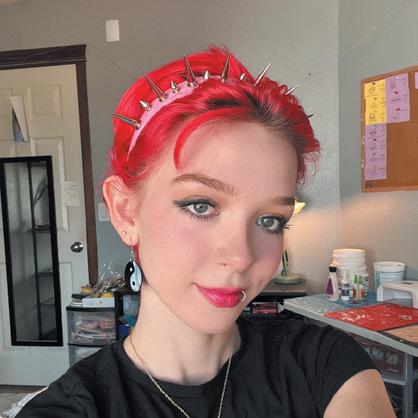
BY MEGAN SELING
Faith Charlotte’s Instagram feed looks delicious. There are stacks of pancakes slathered with butter and syrup, wedges of cheesecake topped with vibrant cherry sauce, and bowls of ramen brimming with noodles and narutomaki.
But you can’t eat any of it. These handcrafted clay creations—some with faces, others with hidden compartments—are the cutest trinket boxes, incense burners, and ring holders you’ll ever see.
Charlotte was still in high school when she started up her online shop, Charlotte’s Clay Shoppe, in 2017, and last year her pieces were in such high demand that she was able to quit her day job and focus on her art full-time. She says she’s made and sold more than 1,100 stacks of pancakes, slices of cheesecake, bowls of ramen, and smiling hamburgers and hotdogs from her

You mention on your website that the pandemic gave you time to really dig into your art and start selling it. Do you now make these cute AF food treasures full-time?What did you do prior to that?
Yes, Charlotte’s Clay Shoppe is a full-time job! It feels crazy to say that sometimes. I was still a high school student in 2020 so I suddenly had a lot of free time to get back into art and started selling it. In 2021 I graduated and became a barista while still running CCS on the side. By 2022 I had quit being a barista to pursue my business as a full-time job. It was such a scary leap but I’m so thankful that I did it!
I have one of your pancake boxes and I am obsessed with it. The syrup is so realistic! What is it made of? Is it a secret formula that took some time to figure out?
Thank you so much! The syrup is made of two-part epoxy resin—the secret sauce is the color formula I use. I have a special amount of color drops I use per ounces of

Absolutely, after most preorders I treat myself to the real food version of what I made!
During my last pancake preorder, I craved them daily, so after I shipped the last batch out I went to a breakfast spot and ate a big plate of pancakes. It’s a very tasty way to celebrate finishing a bunch of orders!
What is your favorite real, not-made-of-clay snack?
My favorite non-clay snack would have to be Flavor Blasted Goldfish. So salty and delicious.
I read that you also play music! Do you listen to music while you work?
Music is such a huge passion of mine! I really love recording and playing music when I’m not working. Listening to music helps me focus when I work and it gives me such a huge energy boost. My favorite artists are Pixies, Nirvana, Dandy Warhols, Pavement, Soundgarden, Alice in Chains, and Talking Heads. And Blur. And the Presidents of the United States of America. It’s so hard to narrow down!
Get your own pancake box at charlottesclayshoppe.com and follow Faith Charlotte on Instagram at @charlottesclayshoppe. ■








With a 38-year presence on the Eastside and 22 years in Kirkland, Gunnar Nordstrom Fine Arts and La Petite Galerie have become your trusted source for exceptional fine art from a dealer who prides himself on integrity, fair values, and a sense of community.
Representing regional, national, and International artists with rotating monthly exhibits, the gallery shares a whimsical and playful personality with a more serious side where you can purchase works from Dr. Seuss to Rembrandt and an abundance in between. Currently we are the only source for the Art of Dr. Seuss in Washington State.
The gallery is also happy to search specific works using its 40 years of experience and network of dealers worldwide to satisfy your art needs.
Conveniently and quaintly located downtown with FREE on-street parking, the Gallery is beautifully situated in the Marina District on Kirkland Avenue at the entrance to our beautiful waterfront.

BY MEGAN SELING
Icried the first time I saw Kataka Corn perform. They were starring in the 5th Avenue Theatre’s 2022 production of The Wiz and days ago I had just moved back home to the Pacific Northwest after being away for almost a decade.
During show’s final song “Home,” Corn’s voice was as powerful as Aretha or Diana or Whitney when they sang, “A world full of love / Like yours, like mine / Like hoooooome.” I fucking lost it.
I blamed my emotional purge on the timing, but in the summer I saw Corn again in ArtsWest’s production of Hedwig and the Angry Inch. They played Yitzhak alongside Nicholas Japaul Bernard’s Hedwig, and the two were explosive. When Corn sang the finale, “Midnight Radio,” it happened again! Tears! And I wasn’t the only one. The audience was full of people wiping their eyes. See Corn yourself when they perform in Seattle Shakespeare Company’s production of The Merry Wives of Windsor in October. It’s a comedy, but bring tissues just in case.
Your voice is mesmerizing. How long have you been singing?
Thank you! I started singing when I was around 12 and began with community children’s choir and training in opera. So just over a decade now, which doesn’t seem very long now that I think about it.
I watched The Wiz a lot growing up, but had never seen it on stage until last year. Everyone was crying while you sang “Home.” Did you have any connection with the film or the play prior to starring in it?
I was pretty familiar with the tunes but hadn’t actually watched the film or seen the musical until a few years ago. Then, of course, I fell in love with it, having resonated with Dorothy’s struggles. When I tell you doing that show, in that role, with that cast, at the 5th Avenue Theatre was a dream come true… I mean, I will never get an opportunity to experience anything like that again. I’m so grateful for the support I received during the show and from then on.
Speaking of the 5th Avenue Theatre, in the opening monologue of Hedwig, Nicholas
Japaul Bernard took a cute little swipe at them by joking about how y’all couldn’t perform Hedwig there because they already had their annual all-Black cast show. Was that joke written before you were cast? Was that improv?
Oh my goodness, okay, so the director, Eddie DeHais, took a good look at the script and realized the author’s note gave permission to make all the changes necessary to make sense with our setting (2023, WEST Seattle, post quarantine, all-Black cast, etc.), just “make it funny” while we do it. So Eddie took this newfound freedom and ran with it! That being said, the script is quite short without the devised material and improvisation; Nicholas Japaul Bernard, being the hilarious and creative genius that he is, curated the material/ improvisation. To answer your question, that was a written joke, not improv, only to poke fun at the fact that The Wiz was the very first all-Black cast on the 5th Avenue stage in 2022, and it was during the process in which most of the new material was discovered, being very aware, honest, and celebratory that we were an all-Black cast of Hedwig and the Angry Inch, which is hardly ever seen.
I read that the upcoming production of The Merry Wives of Windsor will be a queer adaptation of the play. Can you tell me more about that?
Y’all are in for an absolute TREAT! Eddie DeHais is back with the immaculate storytelling, creativity, magic, and tricks. Everywhere I go, the music follows. Surprise surprise… and I’ll be music directing! No spoilers!
What’s your go-to karaoke song?
Honestly, I despise doing karaoke, but I love to watch! More power to the folks who do it. However, I love singing anything Whitney Houston, and from the musical theatre canon, Les Misérables and Beauty and the Beast
See Kataka Corn in Seattle Shakespeare Company’s presentation of The Merry Wives of Windsor at Center Theatre October 25-November 12. ■



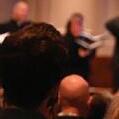









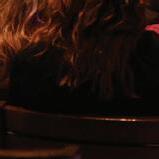







BY MEGAN SELING
Jenn Champion has been making music for more than 20 years, both solo and as a member of Seattle’s saddest misspelled indie band Carissa’s Wierd, and she’s released music through some of the Northwest’s coolest record labels including Suicide Squeeze and Hardly Art.
This year, she’s doing something she’s never done before: Putting out her music her damn self.
Thanks to a successful Kickstarter campaign, with which she raised more than $40,000, Champion will release The Last Night of Sadness on October 13. The record, she wrote on Kickstarter, is about “the difficulty and absurdity of being an alive person.” It’s no surprise nearly 500 people contributed to hear the results—few songwriters do sadness as well as Champion can. Case in point, the first single, “Famous.” It’s a moody, mid-tempo dance track that sounds like a disillusioned Taylor Swift on downers. The synth tries to sparkle through Champion’s foggy memories of a difficult childhood and mistakes made along the way. Gloomy, contemplative—it’s the perfect music for fall. But also summer, winter, and spring, too, because for folks like Champion (and myself, if we’re being honest) sadness isn’t seasonal, it’s forever.
You have lived in LA for a while now, but I still think of you as a Seattle artist. I don’t know why, it just seems right. Do you still consider yourself a Seattleite?
I will always feel like Seattle is my hometown. I didn’t go to high school there or anything, but the person I am today was made in the dish pits of Seattle.
But Seattle is way better than LA, right? I refer you to my weather app.
Your new record, The Last Night of Sadness, is the first time you’re self-releasing an album. Why did you choose to forgo a record label this time around?
Short answer: Capitalism. Longer answer: Ughhhhhh capitalism! I got to work with all my dream labels while putting music out
over the past 20 years, but, at best, with a label you get an advance and have to pay it off.
I just didn’t want to start in debt. So I raised the money by asking fans to donate and it worked. I can’t believe my life sometimes, that enough people like my music that they were like, “Yes, here is some money for your art.” The relationship is so much more direct this way and I love it. So it’s like Jenn Champion (Taylor’s version).
I like the title, The Last Night of Sadness. It can be interpreted in different ways. It could be a good thing! It could be the last night of sadness because the sadness is fleeting. But it could be the last night of sadness because sadness has won and it’s the last night of… everything. How do you intend it to read? Or maybe you like the mystery?
I intended it to be read exactly as you read it! Because I am both happy and sad, always. The title is actually a line from Blue Öyster Cult’s “(Don’t Fear) The Reaper,” which I covered earlier this year. But I think once people hear the whole record they will get it. And um, sorry?
The first single, “Famous,” has a cool dichotomy going on—personal, difficult lyrics paired with beats that make it sound more like a bop. A moody bop! But still a bop. You say on Bandcamp that it’s okay to cry along to the songs, but is it okay for people to dance to your grief, too?
I prefer it. I think this album is meant to have all the emotions in all the songs. I hope people listen and dance and cry and sing along really loudly and take a bath and maybe smoke in the shower or sing it with a friend. Mostly, I want people to like it. Whatever that looks like for them.
One of your old bands, Carissa’s Wierd, is one of the bands I listen to every fall. It’s very autumnal to me. Are there any songs or albums that are total fall music to you?
Heathers soundtrack.
See Jenn Champion at Fremont Abbey Thursday, November 9. Tickets are available at fremontabbey.org. ■













BY MEGAN SELING
Wondering what the fuck a cake baker is doing in an arts magazine? Charlie Dunmire’s cakes are art. From her Georgetown bakery, Deep Sea Sugar and Salt, Dunmire and staff bake more than 150 cakes and 500 cupcakes every week, and each one is as picture-perfect as it is delicious.
The lemon cake—with a tart citrus bite that will tickle your parotids—is decorated with dollops of yellow frosting that have been pulled towards the center with the back of a spoon to recreate lovely little gerbera daisy petals. The s’mores and key lime cakes wear a cap of puffy, fluffy meringue with peaks reaching out and just begging to be plucked with a finger. The cupcakes are prettier than your average cupcake, too. Wavy ridges of frosting or ganache are carefully piped across the top like the pattern on a Joy Division T-shirt, but with sprinkles.
In September, Deep Sea will leave the little green storefront that’s been the bakery’s home for the past five years and move on down the road to a bigger space on Airport Way, where Dunmire and Co. can accommodate a larger menu, dine-in, and, on their new patio, dogs. This is good news for Deep Sea’s curious and cute shop dog, Duckie.
Deep Sea is moving! The new space looks so big and shiny and exciting. People will be able to eat their cake there, at the shop, which I’ve missed since you shifted to being takeout-only in 2020. How else will this new space expand Deep Sea’s offerings?
Our new spot on Airport Way will have a pick-up window for pre-orders, two patios for year-round outdoor seating (it’s really for the dogs though—please bring all the dogs), and a pretty extensive drink menu. We will be utilizing all 16 taps that are already built into the space, so beer, wine, cold brew coffee, kombucha, cider. As far as cake goes, I’m hoping to bring back our breakfast cakes as a permanent weekend staple. Maybe we’ll add our new Munchies Cake to the permanent menu, too.
I’m sorry, breakfast cakes? What is a breakfast cake?
Pre-pandemic, I made breakfast cakes just about every Sunday at the shop. It’s our ricotta olive oil cake stuffed with fresh fruit, housemade nut butters, sweet cheeses, or really anything I can find that sounds delicious. They’re made either as a single serving in a cupcake tray, or as big rounds cut into slices. I like to add a thick pat of butter on mine, while it’s still warm. Some people might try to call them muffins, but those people would be wrong. Breakfast cakes!
Your cakes have been a part of so many celebrations and life events. People serve them at baby showers and weddings. I saw on Instagram someone got a cake and used it to propose marriage? What is the most surprising moment or event a Deep Sea cake has been a part of?
That proposal was so special. I think we’ve actually made two or three proposal cakes. The first one, they came into the shop and found it behind the case after we opened early for them. So sweet to be part of that. I love it! The divorce cakes come through now and then. I’m always a little surprised, but also silently cheering them on for making moves, and happy we can help make those big life moments a little sweeter.
Last, and most important question: How’s Duckie?
Duckie is so good. The novelty of our new kittens has worn off for her, and now it’s funny to watch her get irritated with their shenanigans. She’s a great big sister! I’ll tell her you said hello.
Get cake by the slice at Deep Sea Sugar and Salt every Thursday-Sunday at 11 am-6 pm. You can also order full cakes or slices for pick-up at deepseasugarandsalt. com. Follow the shop on Instagram at @deepseasugar for updates about their upcoming move. ■












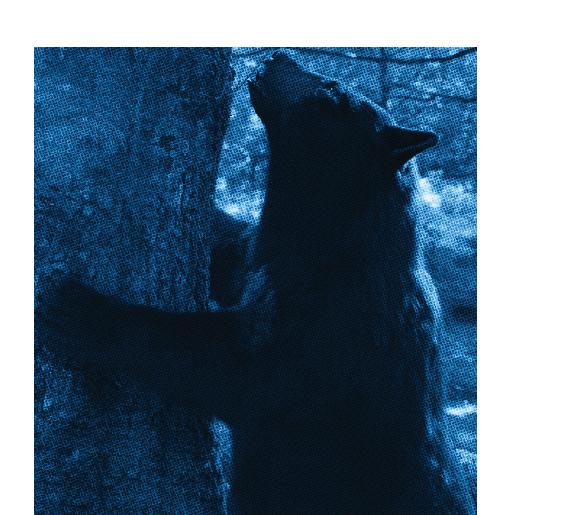
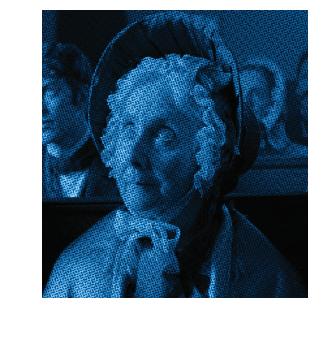





BY LINDSAY COSTELLO, AUDREY VANN, AND JULIANNE BELL
Back in 2015, Stranger senior staff writer Charles Mudede wrote, “What is this city becoming? What have we lost in the rush and thrust of all these new developments? To whom does this growing city belong? The brilliant Local Sightings Film Festival will show films that reveal the answers to these questions, through features, shorts, and animation that are born here or hereabouts. There’s much to see and much to talk about.” The premise of the hybrid festival hasn’t changed much since then— Local Sightings will return for its 26th anniversary this year, offering up another round of curated screenings and transforming the city into a hub for indie filmmakers who forgo New York or LA for the Pacific Northwest’s endearing eccentricity. The always-great, hyper-local film festival also offers opportunities for regional filmmakers, emotional storytellers, and documentarians to meet-cute at the festival’s events. I’m curious about the two-day found footage workshop, the short film program by “nonbinary trans and queer myth builders” Scumtrust, and the opening feature, Fantasy A Gets a Mattress directed by local legend Fantasy A. Northwest Film Forum (Sept 15–24) LC

Last year, former Stranger staff writer Jas Keimig called this nine-year-old annual film festival “our Cannes.” It may not be set against a Mediterranean backdrop, but the island’s Eastsound village is pretty damn scenic, too. Plus, last year’s flicks earned a whopping 27 Oscar nominations, so you’re bound to see something Letterboxd-review-worthy. For instance, quirky satire king Alexander Payne (Sideways) will return with The Holdovers, which stars Paul Giamatti as a cantankerous New England prep school instructor tasked with supervising students on Christmas break. I’m intrigued by this year’s Palme d’Or winner, Anatomy of a Fall, as well as The Disappearance of Shere Hite, a doc on the feminist sexologist and female orgasm pioneer. Orcas Island (Oct 11–15) LC


SEPTEMBER 27–NOVEMBER 30
Look out for cigarette smoke and midnight jazz riffs: Greg Olson, Seattle Art Museum’s film curator from 1977 until the position’s elimination in 2020, will return with Dark Dreams: The Original Film Noir Series. Olson’s noir expertise has been long praised by local voices like film writer and professor Dr. John Trafton, who deemed this year’s lineup a “thrilling and mesmerizing journey for die-hard noir fans and the uninitiated,” and journalist Charles R. Cross, who called Olson “Seattle’s all-time-best film curator.” Nine films spanning 60 years of noir style will screen at SIFF Cinema Egyptian; I’m stoked for the free Top Pot doughnuts on opening night and the pre-screening noir playlists by film curator Tova Gannana. SIFF Cinema Egyptian LC

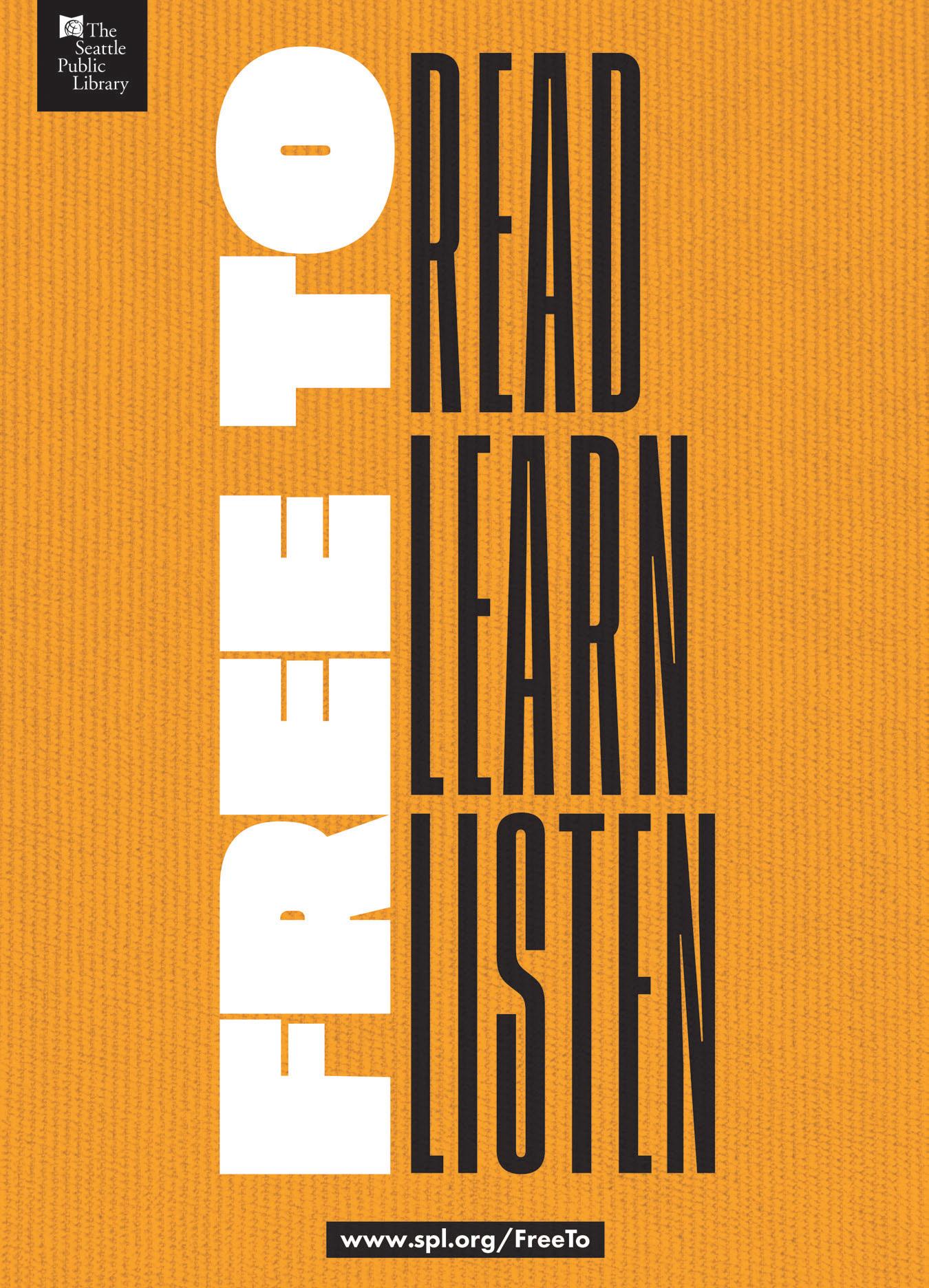
A loud-and-proud voice in the Seattle film scene since ‘96, the Seattle Queer Film Festival is now presented in a hybrid format, blasting an expansive range of queer stories onto big screens (and your computer screen, if that’s your preference).
I’m pumped for 18 days of queer magic, with in-person screenings planned October 12–22 and virtual screenings October 22–29, plus buzzy parties, live podcasting, filmmaker panels, and workshops. This year’s festival theme, “Queer Joy is Cinematic,” will bring the ebullience with 50 programs and over 80 films at Northwest Film Forum, Broadway Performance Hall, SIFF Cinema Egyptian, and Ark Lodge Cinema. Various locations
(Oct 12–29) LC
Seattle Latino Film Festival
(Oct 6–14) Social Justice
(Oct 11–15)
Tasveer Film Festival
(Oct 12–22)
Silent Movie Mondays:
He Who Gets Slapped
(Mon Oct 23)
Disney in Concert: The Sound of Magic Benaroya Hall
(Oct 26–29)
Peter Pan with Live Harp Score
Grand Cinema
(Sat Oct 28)
Harry Potter and the Half-Blood Prince in Concert with the Seattle Symphony Benaroya Hall (Nov 3–5)
Dirty Dancing in Concert McCaw Hall (Fri Nov 17)
Spider-Man: Into the Spider-Verse Live in Concert
Paramount Theatre (Fri Nov 17)
Found Footage Festival Vol. 10
SIFF Cinema Uptown (Thurs Nov 30)
Mountains on Stage SIFF Cinema Uptown (Tues Dec 5)
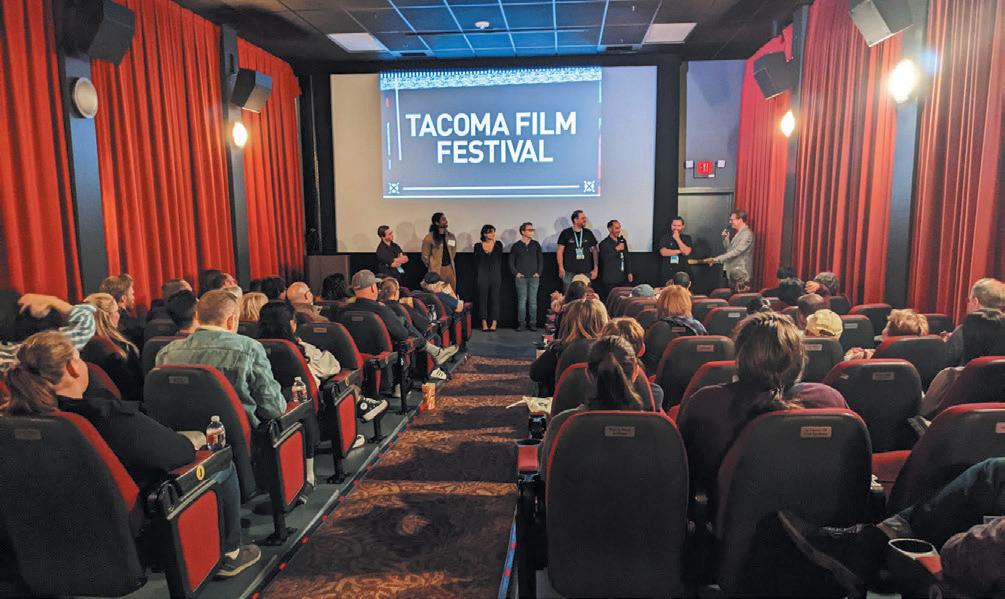
The Tacoma Film Festival, which Stranger senior staff writer Charles Mudede deemed “the Sundance of the Pacific Northwest” last year, will return to celebrate all things independent cinema. (“What makes this festival one of the best in the region,” says Mudede, “is the charm of its main location and smart programming.”) Expect a killer roster of documentaries, shorts, and narrative films. Opening night will include the Tacoma premiere of Fantasy A Gets a Mattress (on the heels of several sold-out screenings in Seattle), and the fest’s “centerpiece film,” Immediate Family, is a rock doc on iconic musicians Leland Sklar, Danny Kortchmar, Russ Kunkel, and Waddy Wachtel. Fancy Dance, a family drama about Indigenous women and the justice system, will screen on closing night. Grand Cinema LC



When the Canadian author and social activist Naomi Klein found herself being continuously confused with a certain COVID conspiracist with a similar name (cough, Naomi Wolf, cough), she did the opposite of what I would do (delete my social media and disappear forever). Instead, her digital doppelganger inspired a book on what Klein deems “collective vertigo,” a distorted sense of reality that grows increasingly scrambled by social media, AI-generated content, echo chambers, and contradictions. (We live in hell, and her new name is X.) According to Klein, Doppelganger: A Trip Into the Mirror World “grapples with the wildness of right now.” She’ll dig into it at this talk. Town Hall Seattle (Thurs Sept 21) LC
Hang on to your carabiners: Seattle Arts & Lectures and the national nonprofit Trust for Public Land, which promotes equitable access to the outdoors, will present this free evening with the Full Circle Everest Team, the first all-Black team to summit the highest mountain on Earth. (Meanwhile, I lose my breath summitting Seattle’s hills.) Full Circle Expeditions executive director Philip Henderson, who has also summited Denali and Mount Kilimanjaro, will join sociologist/ mountaineer Demond “Dom” Mullins and Trust for Public Land’s Northwest director, Mitsu Iwasaki, to “amplify a national conversation about inclusion and equity in outdoor recreation.” Town Hall Seattle (Wed Nov 15) LC

MONDAY, OCTOBER 16
If there’s such a thing as a household-name author, Barbara Kingsolver might be one example—she’s been famous ever since the ‘98 release of her epistolary novel The Poisonwood Bible. Her latest work, 2022’s Demon Copperhead, which is an angry and compassionate retelling of David Copperfield set in the midst of the Appalachian opioid epidemic, won the 2023 Pulitzer Prize for Fiction. It’s a bestseller (natch), was named one of the top 10 books of the year by the New York Times and the Washington Post, and serves as a reminder that Kingsolver’s talent ain’t going anywhere. Benaroya Hall LC



Drag queen Ginger Minj stole hearts across America on the seventh season of RuPaul’s Drag Race, winning three challenges and ultimately placing as the runner-up to winner Violet Chachki before returning for seasons two and six of Drag Race All Stars The self-described “nicest bitch you’ll ever meet,” “froganista,” and “glamour toad” is known for her side-splitting impressions of celebs like Adele, Phyllis Diller, and Tammy Faye, as well as her feisty Southern belle persona. Now, the redheaded icon is turning her talents toward the culinary world with the release of her new cookbook, Southern Fried Sass which imparts her secrets to “everything from contouring to cooking and setting the table for a full-on Southern-style Thanksgiving dinner.” You can look forward to behind-the-scenes tea, decorating tips, advice gleaned from her grandmother, and recipes ranging from Red Barn BBQ ribs to “better than sex cake.”
Elliott Bay Book Company (Thurs Dec 21) JB
Rick Riordan Benaroya Hall
(Tues Sept 26)
Aparna Nancherla Washington Hall (Wed Sept 27)
Jane Hirshfield Rainier Arts Center (Mon Oct 2)
Oliver Jeffers
Town Hall Seattle (Thurs Oct 5)
Melissa Broder
Elliott Bay Book Company (Thurs Oct 12)
David Sedaris Benaroya Hall (Sun Nov 12)
David Brooks Town Hall Seattle (Mon Nov 20)
Steve Inskeep Town Hall Seattle (Tues Nov 28)
Rainn Wilson Moore Theatre (Fri Dec 1)

Unless you’ve been living under the literary equivalent of a rock (a massive stack of dusty old books, perhaps?), you’ve likely heard of Vietnamese American author Viet Thanh Nguyen’s The Sympathizer, which won the Pulitzer Prize for Fiction in 2016. (Nguyen’s debut novel follows an expat, cultural film consultant, and North Vietnamese mole in the South Vietnamese army. And you thought your job was hard.) Returning with his now-signature sardonic humor and incisive style (“A voice that shakes the walls of the old literary comfort zone,” says the New Yorker), Nguyen turns the memoir genre on its head with A Man of Two Faces, blending personal stories with wider thoughts on refugeehood, colonization, and ideas about Vietnam and America. Town Hall Seattle LC








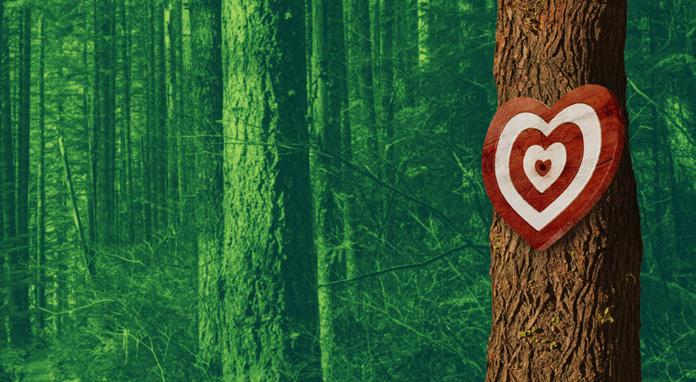




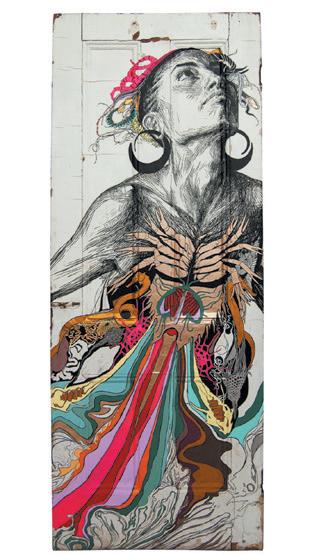
Focusing on female artists whose works “employ a strategy of fragmentation,” Positive Fragmentation: From the Collections of the Jordan D. Schnitzer and His Family Foundation compiles a whopping 200 prints that dismantle, reconstitute, and blend new ideas. The exhibition’s works include meditations on the body, explorations of urban landscapes, and a focus on women of color artists. Although these artists are often underrepresented in museum
spaces, you’re bound to spot a few names you recognize, like art icons Betye Saar, Kara Walker, and Wendy Red Star. Judy Pfaff, Jenny Holzer, Judy Chicago, Louise Bourgeois, and Polly Apfelbaum are also standouts. Bellevue Arts Museum (Sept 30, 2023–March 10, 2024) LC

Raúl de Nieves: ‘a window to the see, a spirit star chiming in the wind of wonder…’
I try to avoid saying a show has “something for everyone” unless it’s really, truly the case, but New York-based artist Raúl de Nieves’s a window to the see, a spirit star chiming in the wind of wonder…
might fit the bill. De Nieves will transport aesthetic traditions of Mexican craft, Catholicism, tarot, the European art canon, drag performance, and punk music to the Henry—seriously, I’m betting you’re into at least one of those things, right? The solo exhibition of paintings, sculptures, and performances by the Mexican-born artist will include one of his signature “stained glass” installations (made with colored acetate and tape), which will imagine a celestial landscape and transform the museum’s largest gallery space into a “container of colored light.” The goal? A reflective, meditative journey—anticipate temple-like seating, a kaleidoscopic atmosphere of ever-changing light, and ritualistic performances punctuating the run of the exhibition. Henry Art Gallery (Sept 30, 2023–Aug 25, 2024) LC

Brazilian-born, LA-based artist Clarissa Tossin’s multimedia works (including films, sculptures, and drawings) look closely at global capitalism’s
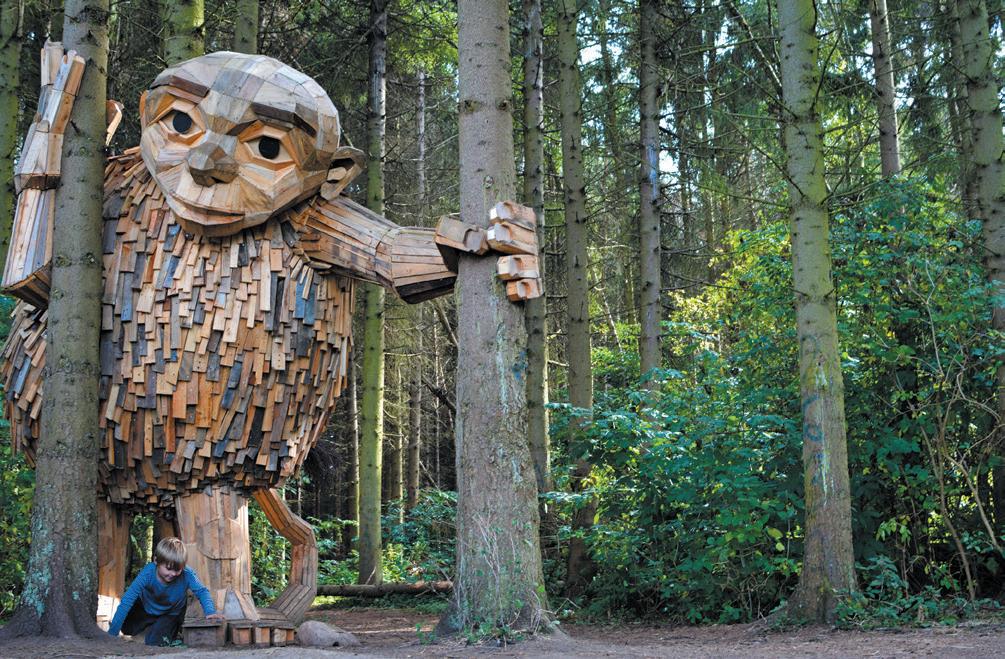
STARTING MONDAY, SEPTEMBER 18
If you’ve come across a massive Nordic troll in the wild lately, chances are you’re not hallucinating—you’ve just discovered one of Danish artist and environmentalist Thomas Dambo’s gigantic, hand-built, recycled sculptures. His Pacific Northwest-based project, Northwest Troll: Way of the Bird King, has seen six humongous Nordic trolls land in scenic spots across the region, including Bainbridge Island, Issaquah, Vashon Island, West Seattle, and Portland. The final one will be unveiled at the National Nordic Museum on September 18, but they’ll be installed across the region for at least three years. The trolls, which are “characters in an environmental story penned by the artist,” serve to illustrate critical lessons of environmental stewardship. National Nordic Museum LC
“frontier mythologies,” interrogating persistent legacies of colonialism in Latin America and the US through repurposed consumerist garbage. She uses what is perhaps the most potent symbol of exploitation and ecological disaster—Amazon delivery boxes—to think about climate change, mapping as a conquest-driven technology, human consumption, and even space exploration. Why am I stoked about the show? Well, because I’m a nerd: Tossin’s first solo museum exhibition on the West Coast borrows its title from sci-fi writer Octavia Butler’s apocalyptic Earthseed novels. Frye Art Museum (Oct 7, 2023–Jan 7, 2024) LC

I was lucky enough to spot Alexander Calder’s buoyant abstract mobile Lizard (Lézard) at the Palm Springs Art Museum last summer, and therefore must recommend you thrill your eyeballs with this exhibition, which traces the kinetic modernist sculptor’s career from the ‘20s through the ‘70s. Calder: In Motion which pulls from a collection gifted by museum patrons Jon and Kim Shirley, offers a non-chronological narrative of the artist’s mobiles, stabiles, paintings, illustrations, and more with dynamic works installed throughout SAM’s galleries (including its double-height gallery, with overlooks from the floor above). By the way, I hope you’re into Calder, ‘cause his work is here to stay: This show promises to usher in “a new era at SAM,” which will include “ongoing exhibitions and programs centered around Calder and his legacy taking place in downtown Seattle, the Olympic Sculpture Park, and through local and national partnerships.” Seattle Art Museum (Nov 8, 2023–Aug 4, 2024) LC
Satpreet Kahlon: the inscrutable shape of longing
Bellevue Arts Museum (Sept 23–Dec 31)
Kelly Akashi: Encounters Henry Art Gallery (Sept 30, 2023–May 5, 2024)
Rafael Soldi: Soft Boy Frye Art Museum (Oct 7, 2023–Jan 7, 2024)
Roots of Wisdom: Native Knowledge. Shared Science.
Museum of History & Industry (Oct 7, 2023–March 3, 2024)
Refract Fifth
Anniversary: The Seattle Glass Experience
Various locations (Oct 12–15)
Hokusai: Inspiration and Influence
Seattle Art Museum (Oct 19, 2023–Jan 21, 2024)
Short Run Comix & Arts Festival
Seattle Center (Sat Nov 4)
Elizabeth Malaska: 2022 Betty Bowen Award Winner
Seattle Art Museum (Nov 17, 2023–June 16, 2024)
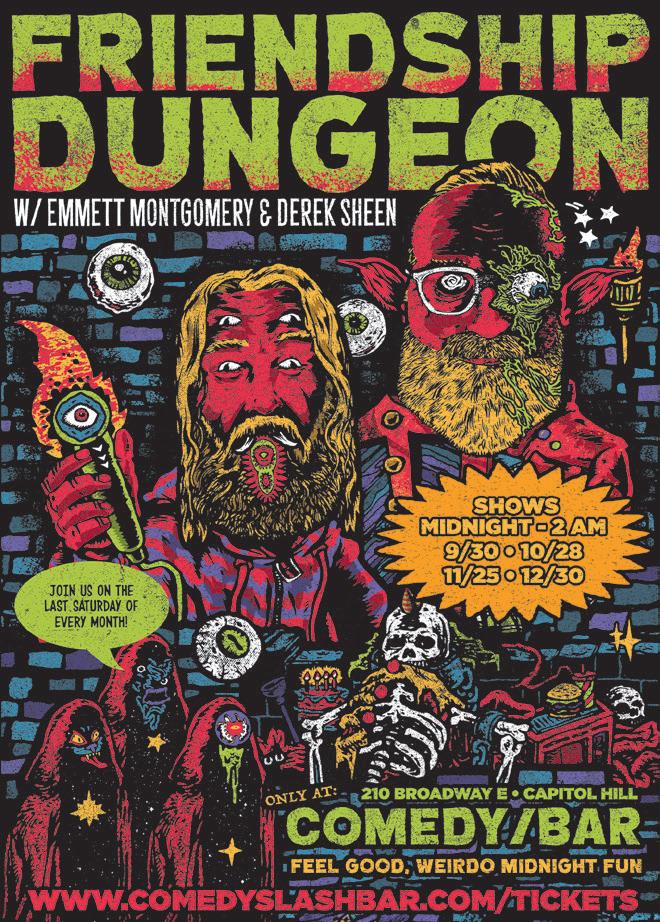


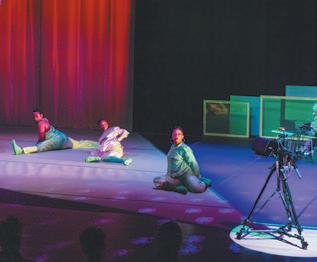
You might’ve caught Will Rawls’s work recently— the New York-based artist has popped up with installations and exhibitions at Adams and Ollman in Portland and the Henry Art Gallery over the last few years. As a choreographer, performance artist, curator, and writer, Rawls’s work is widereaching, and [siccer] is no exception. It’s part-live performance, part-stop-motion animation, and
its title references the Latin adverb sic (which is typically used in brackets to denote an “error” when quoting someone, underscoring the perceived inaccuracy of their speech). To Rawls, “[sic] is a useful metaphor for how the language and gestures of Black bodies are captured, quoted or misquoted, and circulated to appear strange in various media.” As a writer, I’m excited to see how Rawls interrogates the limits of citation. On the Boards (Sept 28–30) LC
Although Showtime tragically canceled her pink-hued, confrontation-as-comedy show earlier this year after a mere two seasons, Ziwe Fumudoh’s button-pressing 2022 interview with Chet Hanks is still the stuff of legend. (Spoiler: He attempts to speak Jamaican Patois, and Ziwe barely lifts a finger, but still buries him.)
The snazzy satirist and queen of discomfort has a gift for bringing out cringe-inducing behavior in privileged people, and she tends to do it all in Cher Horowitz-chic outfits. What’s not to love (or be mildly nervous about)? She’ll drop by Seattle to hand us our asses with a smile. Neptune Theatre (Sun Oct 22) LC


SEPTEMBER 29–NOVEMBER 5
Playwright à la mode Lauren Yee, who wove together immigrant narratives and music-led comedy in Young Americans, is back with Cambodian Rock Band, which follows a survivor’s return to Cambodia after escaping the murderous Khmer Rouge regime 30 years prior. I’m a big fan of Yee’s dramaturgical sensibility, which often seeks to reclaim forgotten or overlooked histories. (She’s also slated to pen the musical adaptation of A Wrinkle in Time, so expect to see her name again!) What’s got me most riled up for Cambodian Rock Band, though, is its live band, which will play jangly Dengue Fever hits and classic Cambodian oldies. ACT - A Contemporary Theatre LC
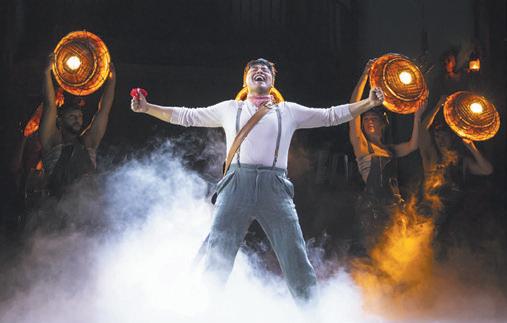
‘Hadestown’
OCTOBER 31–NOVEMBER 5

It’s not easy to improve upon greatness, and to me, “greatness” is personified by the 1994 film Little Women starring the trifecta of perfection that is Winona Ryder, Susan Sarandon, and Kirsten Dunst. (No, not the Greta Gerwig one. I said what I said!!) But hey, this theatrical interpretation might change my mind. Based on Louisa May Alcott’s courageous 1869 novel, which dared to envision an “unladylike” woman author who writes penny dreadfuls and rejects her rich hottie neighbor, this production of Little Women was adapted by playwright Kate Hamill. I am hoping to see Amy put a clothespin on her nose. Seattle Rep (Nov 10–Dec 17) LC
Petite Mort
Pacific Northwest Ballet at McCaw Hall (Sept 22–Oct 1)
Todd Barry: Half
Joking Tour
Neptune
Atsuko Okatsuka: Full
Adult Tour
Theatre (Thurs Oct 5) &
Theatre (Fri Oct 6) Disney’s The
Mermaid
5th Avenue Theatre (through Oct 8)
ZinZanni The Sanctuary at Lotte Hotel Seattle (Oct 12, 2023–March 31, 2024)
Alcina Seattle Opera at McCaw Hall (Oct 14–28)
This Is Halloween Triple Door (Oct 19–31)
Taylor Tomlinson: The Have It All Tour Paramount Theatre (Oct
Greek mythology, but make it oppressive and apocalyptic. This Tony-winning musical by singer-songwriter Anaïs Mitchell and acclaimed director Rachel Chavkin draws from the mythos of Orpheus, Eurydice, King Hades, and Persephone to construct one hell-raiser of a musical. Set within a dystopian landscape of climate anxiety and poverty (hashtag relatable), Eurydice toils away in a bummer industrial setting while Orpheus plans their escape. According to the Seattle Times, the production “makes a strong argument for how art can change the world,” so check it out if you need a breather from your own daily grind.
Paramount Theatre LC
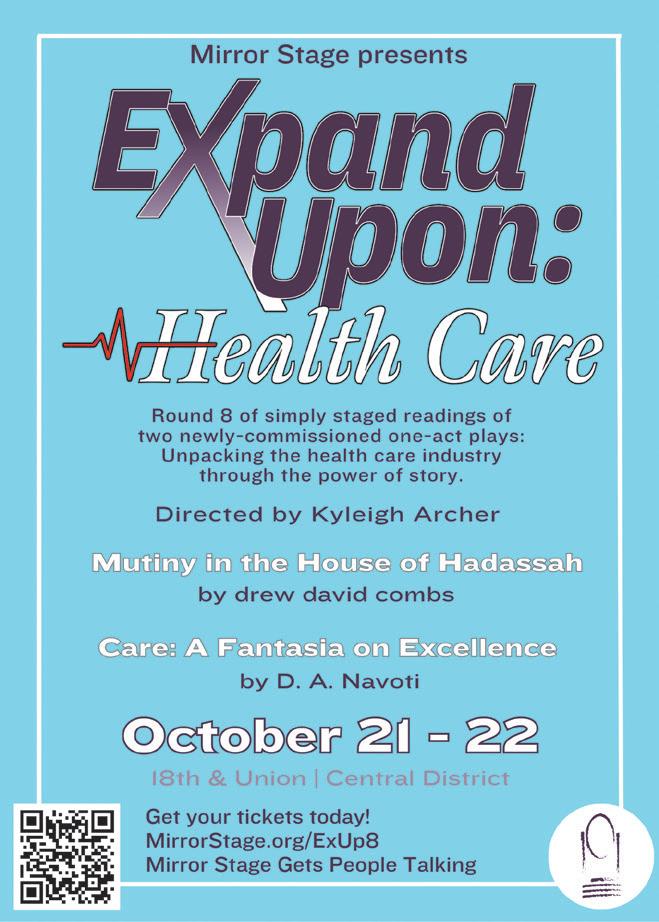
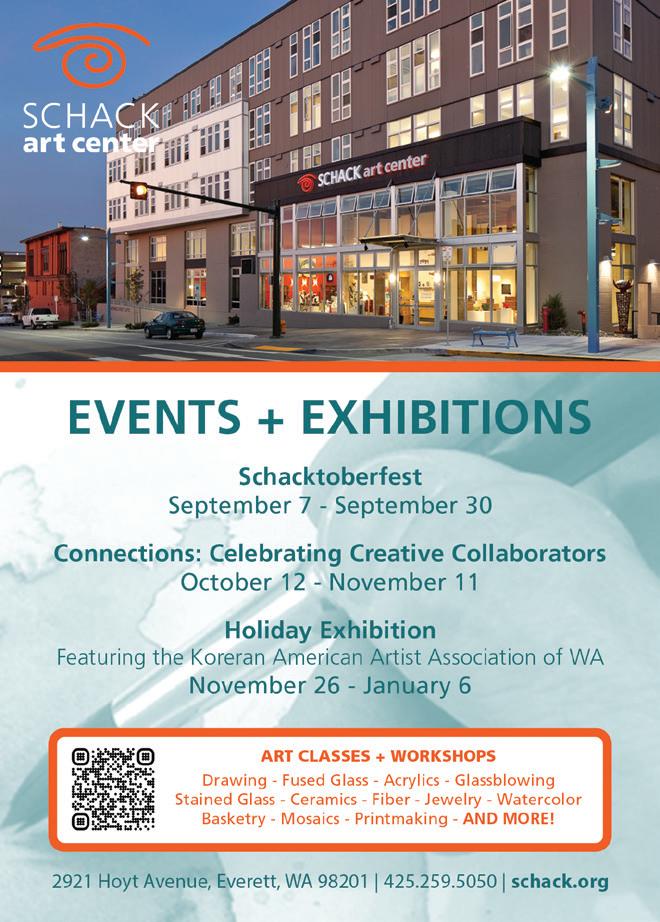




New York-based Pakistani singer-songwriter Arooj Aftab blends traditional Sufi devotional poetry with gentle folk guitar and ambient elements that perfectly cradle her ethereal voice. On her newest project, Love in Exile Aftab collaborated with multi-instrumentalists Vijay Iyer and Shahzad Ismaily for a haunting meditation about “self-exile, and the search for freedom and identity, and finding it through love and music.” With the album’s atmospheric electronics, neo-classical piano melodies, and heavenly vocals, it will surely sound just as magical live. Neptune Theatre (Sun Sept 24) AV
Part classical concert, part theater performance, and part comedy show, The Music Critic is a wit-filled satirical dramatization that takes on vicious (and fictitious) music critiques written about history’s greatest composers and works of music. Academy Award-winning actor John Malkovich (yes, of Being John Malkovich fame) plays an evil critic who believes that the music of Beethoven, Chopin, and Prokofiev is “weary and dreary.” Classical music funnymen Aleksey Igudesman and Hyung-ki Joo (of the comedy duo Igudesman & Joo) lodge a protest. Who will win in the end? Benaroya Hall (Tues Oct 17) AV
Okay, here it is: your last chance to see your favorite post-punk weirdos! Ease that uncontrollable urge to scream/sing “Whip It” amongst hundreds of spuds at Devo’s 50th anniversary Farewell Tour. Founding members Mark Mothersbaugh, Gerald Casale, and Bob Mothersbaugh will plop on their energy domes for a last hurrah ahead of their forthcoming documentary (directed by Tiger King documentarian Chris Smith). My fingers are crossed that they’ll play songs from Q. Are We Not Men? A: We Are Devo!, their debut album. Paramount Theatre (Tues Nov 7) AV
Tacoma-based percussionist Antonio M. Gómez will fill the Frye’s Salon gallery with a visual and sonic presentation that explores the intertwined histories of world music. The LINEAJES exhibit features a custom-built tarima (a traditional Mexican percussive platform) along with an array of global instruments from Gómez’s vast collection. To heighten the experience, Gómez’s Trio Guadalevin and other ensembles have provided recorded soundscapes that will play continuously through the exhibition. This is a wonderful opportunity to expand your knowledge of international sounds and complicate simplified notions of Western civilization. Frye Art Museum (Nov 11, 2023–March 10, 2024) AV

OCTOBER 26–28
While it’s often hard for me to emotionally connect with contemporary indie rock, Angel Olsen’s heartwrenching vocals bring me to tears almost every time I hear them. Her voice, which has been compared to artists like Emmylou Harris and Mildred Bailey, seesaws from deep restraint to freeflowing belts, sometimes in one single breath. Olsen will return to Seattle for three nights with tracks from her new stripped-down EP Forever Means and country-tinged 2022 album Big Time. Don’t miss opening sets from singer-songwriter Allegra Krieger (night one), acclaimed folk artist/poet Kara Jackson (night two), and chamber pop artist Led To Sea (night three). Neptune Theatre AV





SUNDAY, NOVEMBER 26
Goth pop princes Depeche Mode will bring their Memento Mori tour to Seattle in support of their 15th studio album of the same name. Both the album and tour are Dave Gahan and Martin Gore’s first as a duo since the tragic passing of Andy Fletcher last spring. The album features co-writing credits from the Psychedelic Furs’ Richard Butler, which gives the album an irresistible pop sweetness, reminiscent of their earlier hits like “Just Can’t Get Enough” and “Enjoy the Silence.” Climate Pledge Arena AV
Liz Phair’s presence in my life is like a cool aunt who has been there through my purest joys and roughest patches. I was seven years old when her self-titled pop album was released. Fueled by a cocktail of Fruit Roll-Ups and Sprite, I danced around my room to “Why Can’t I?” on repeat until I collapsed into bed. As a teen, I found my dad’s copy of Exile in Guyville and cried in my car to “Fuck and Run” and “Divorce Song.” In college, I dug deeper into the archives. I downloaded her Girly-Sound demo tapes from a questionable online forum and became obsessed with deep cuts like “Ant in Alaska” and “Batmobile.” I’ve had phases with every single one of her albums, but Guyville is her magnum opus—it captures the nuances of womanhood in a way that no other album can (or will). She will celebrate its 30th anniversary by playing the album front to back, along with some additional hits. Moore Theatre (Tues Nov 14) AV
Last year, Samara Joy won the coveted Grammy for Best New Artist, beating out pop radio heavies like Latto, Måneskin, and Wet Leg—and for good reason! On her Verve Records debut, Linger Awhile, Joy puts her own spin on classic jazz standards, making a case for her to join the likes of Sarah Vaughn, Ella Fitzgerald, and Billie Holiday as Verve’s latest jazz singing sensation. Don’t miss your chance to catch a national jewel at the very beginning of her career (Joy is only 23 years old!) Jazz Alley (Sept 28–Oct 1) AV
For three weeks, the 35th annual Earshot Jazz Festival will fill 30 local venues with established legends of the genre and exciting emerging artists. Of all of this year’s great names, I am most excited to see Japanese pianist Hiromi’s groove-fueled ensemble Soundwonder (Oct 8), the Grammynominated vocal supergroup säje (Oct 13), and acclaimed jazz trumpeter Chief Adjuah (Oct 15). Plus, there will be an evening of live music and archival footage, celebrating the life of one of my all-time favorite pianists, Mary Lou Williams (Oct 25). Various locations (Oct 6–Nov 5) AV
Weyes Blood
Paramount Theatre (Fri Sept 29)
Kremfest
Kremwerk-Timbre
Room-Cherry Complex (Sept 29–Oct 1)
The Zombies
Washington Hall (Mon Oct 2)
The Postal Service & Death Cab For Cutie
Climate Pledge Arena (Oct 6–7)
P!nk
Tacoma Dome (Oct 17–18)
Wilco
Paramount Theatre (Oct 17–18)
Wu-Tang Clan & Nas
Climate Pledge Arena (Wed Oct 18)
Kim Petras
WaMu Theater (Mon Oct 23)
Hozier
WaMu Theater (Tues Oct 24)

The Breeders with Belly
Paramount Theatre (Wed Oct 25)
Faye Webster
Showbox SoDo (Thurs Nov 2)
Freakout Festival Ballard (Nov 2–5)
KISS
Climate Pledge Arena (Mon Nov 6)
Jonas Brothers
Climate Pledge Arena (Fri Nov 10)
Nathaniel Rateliff
Paramount Theatre (Mon Nov 20)
Aerosmith
Climate Pledge Aren (Tues Nov 28)
alt-J
Showbox SoDo (Dec 1–3)
The 1975
Climate Pledge Arena (Sat Dec 2)
Macklemore
Climate Pledge Arena (Dec 21–22)

